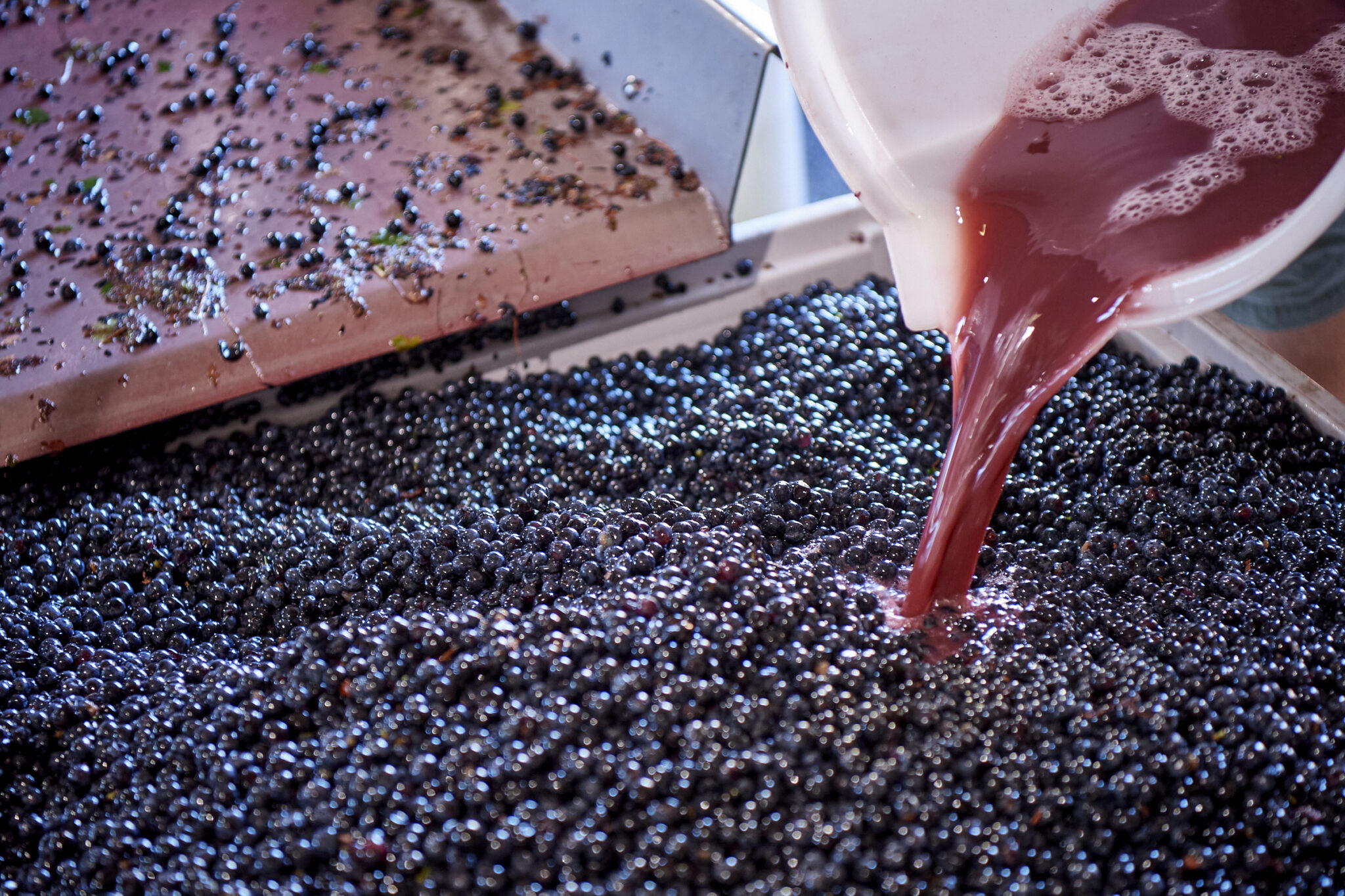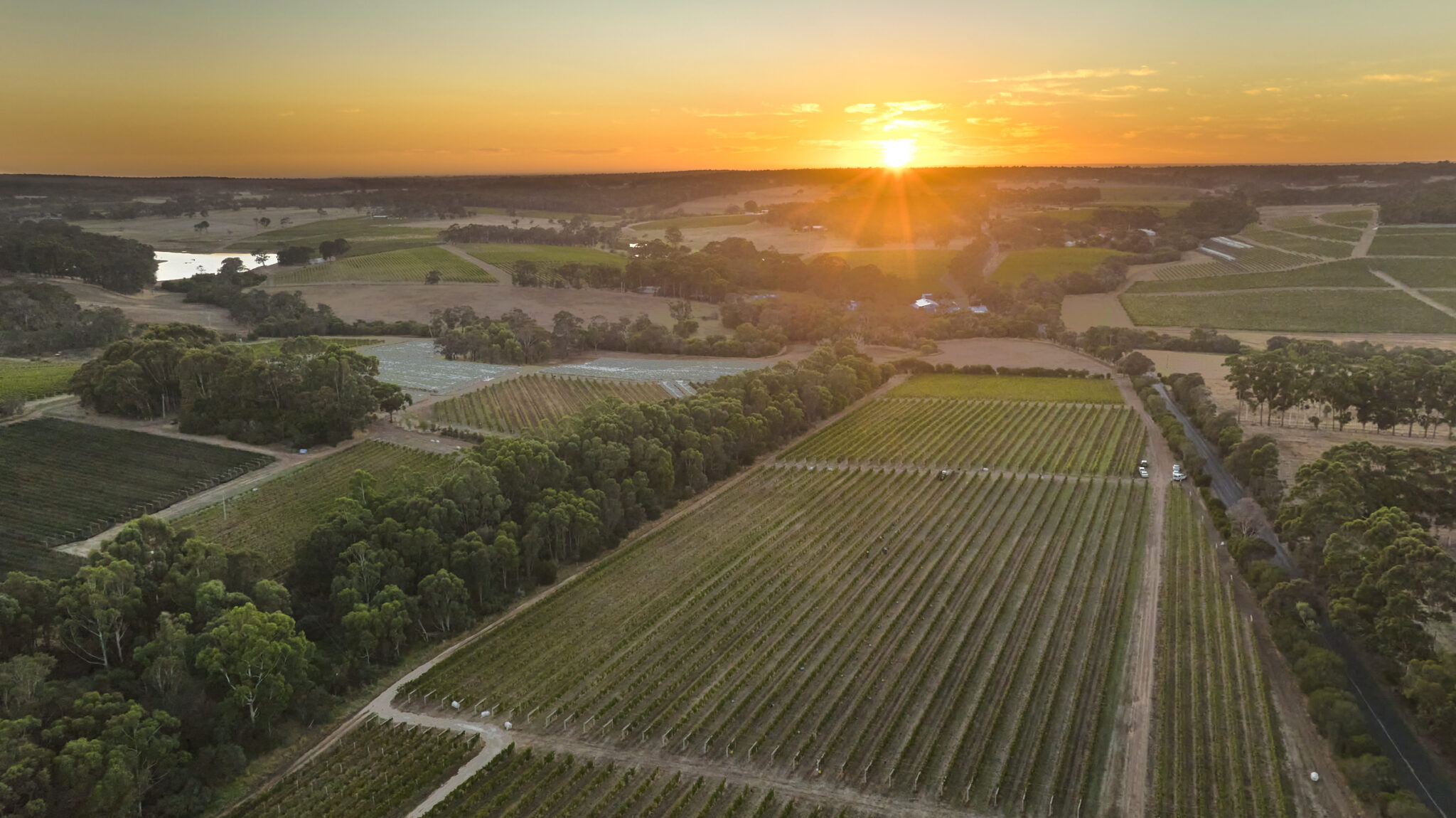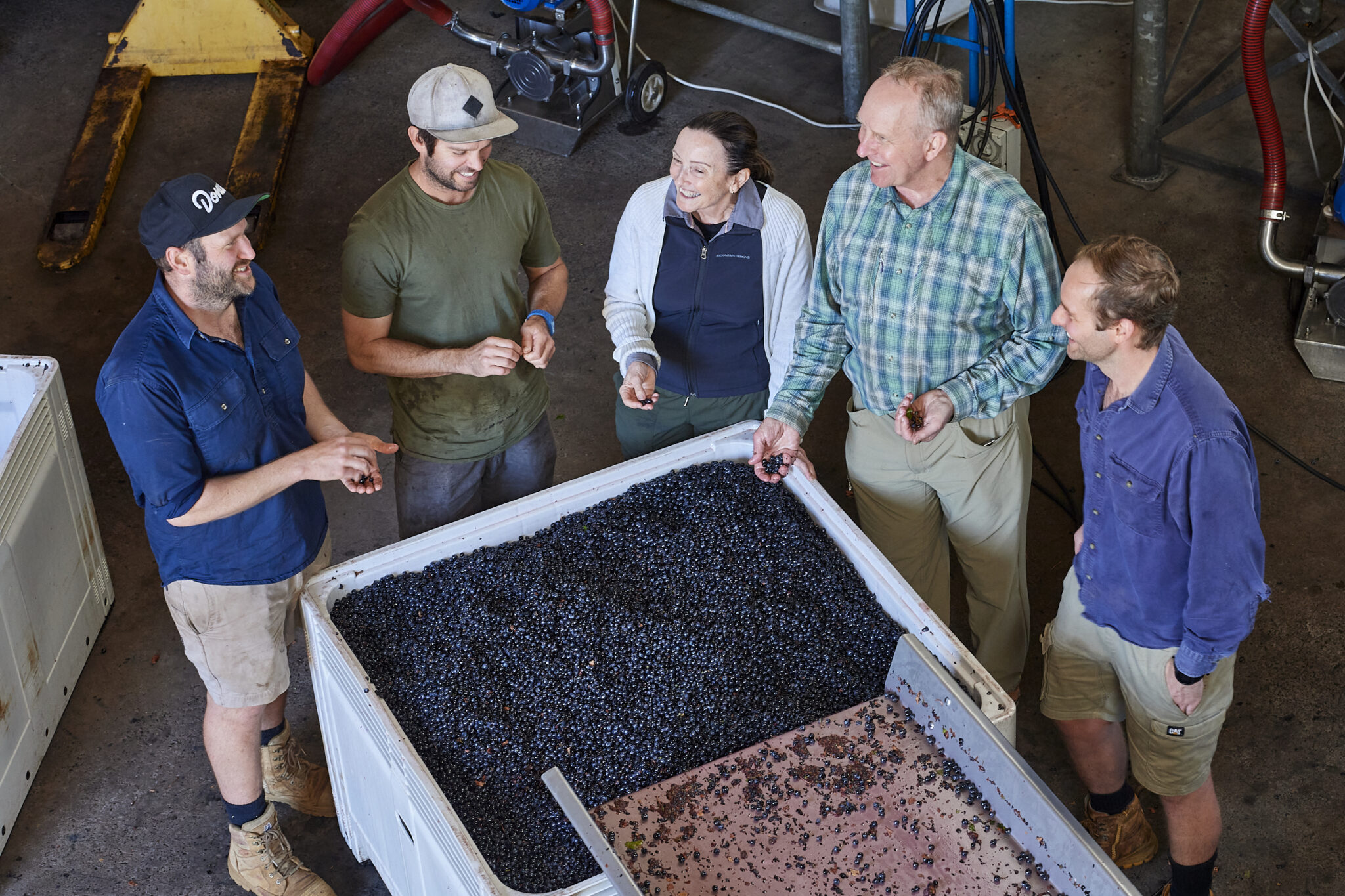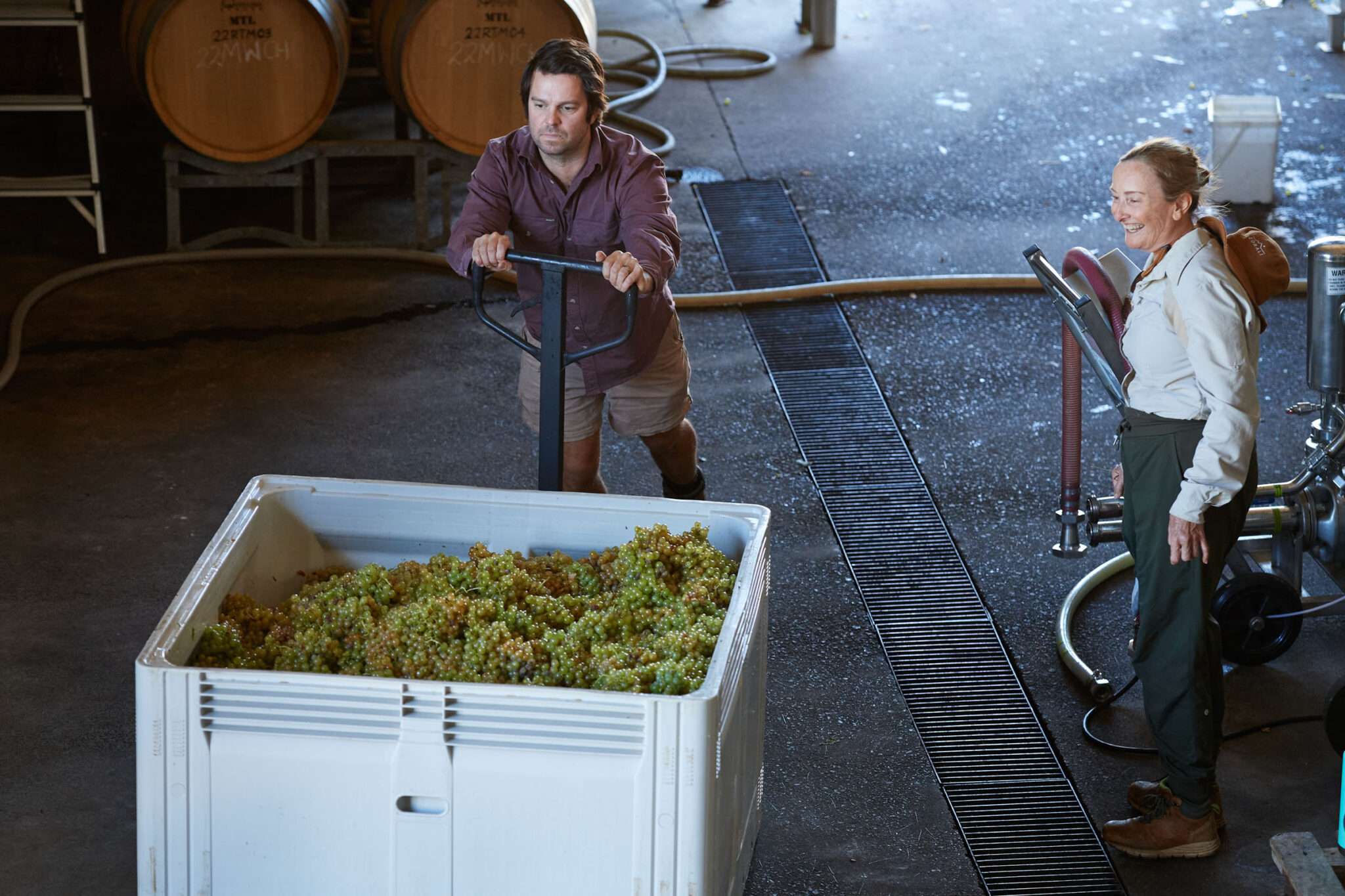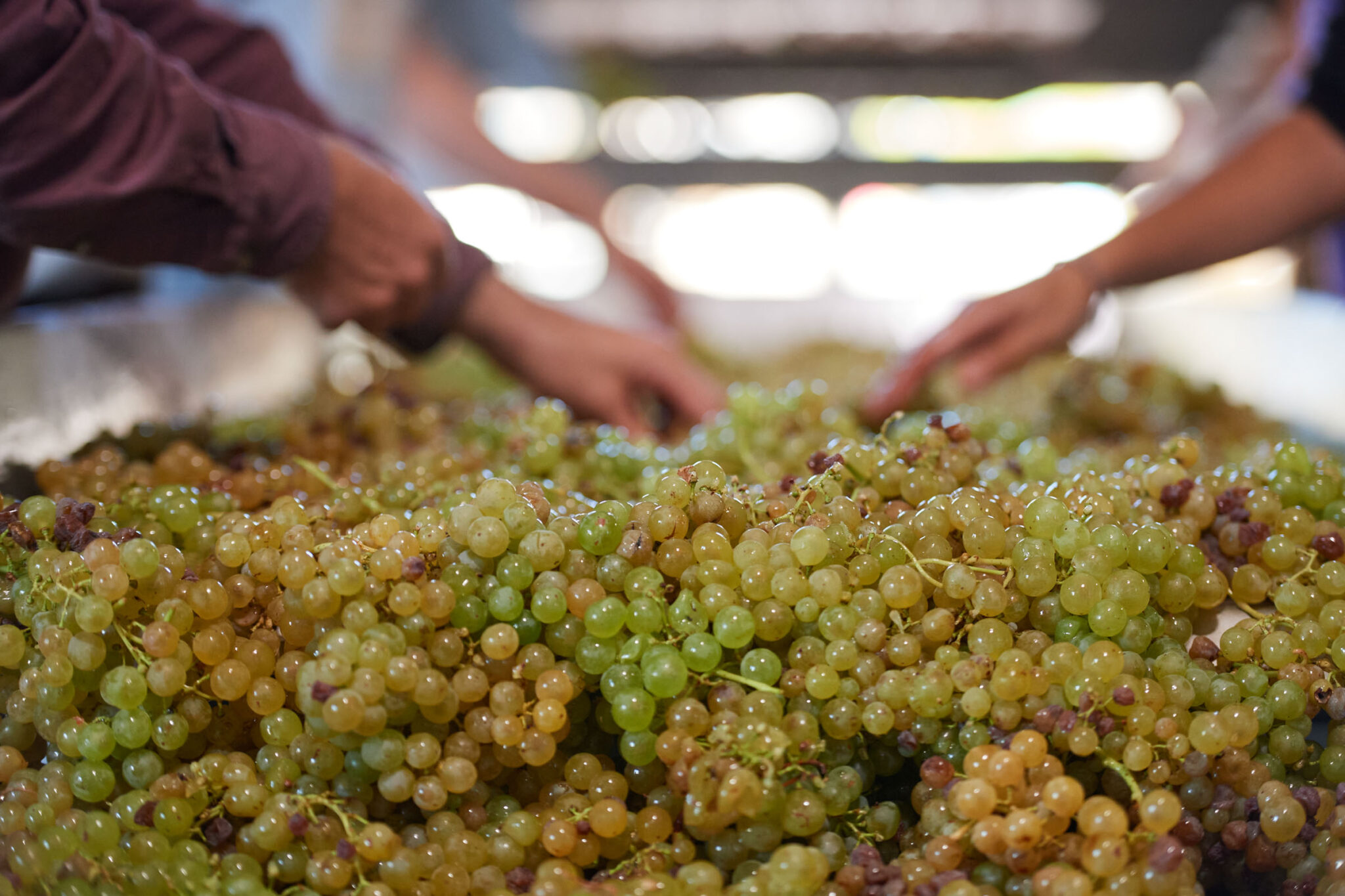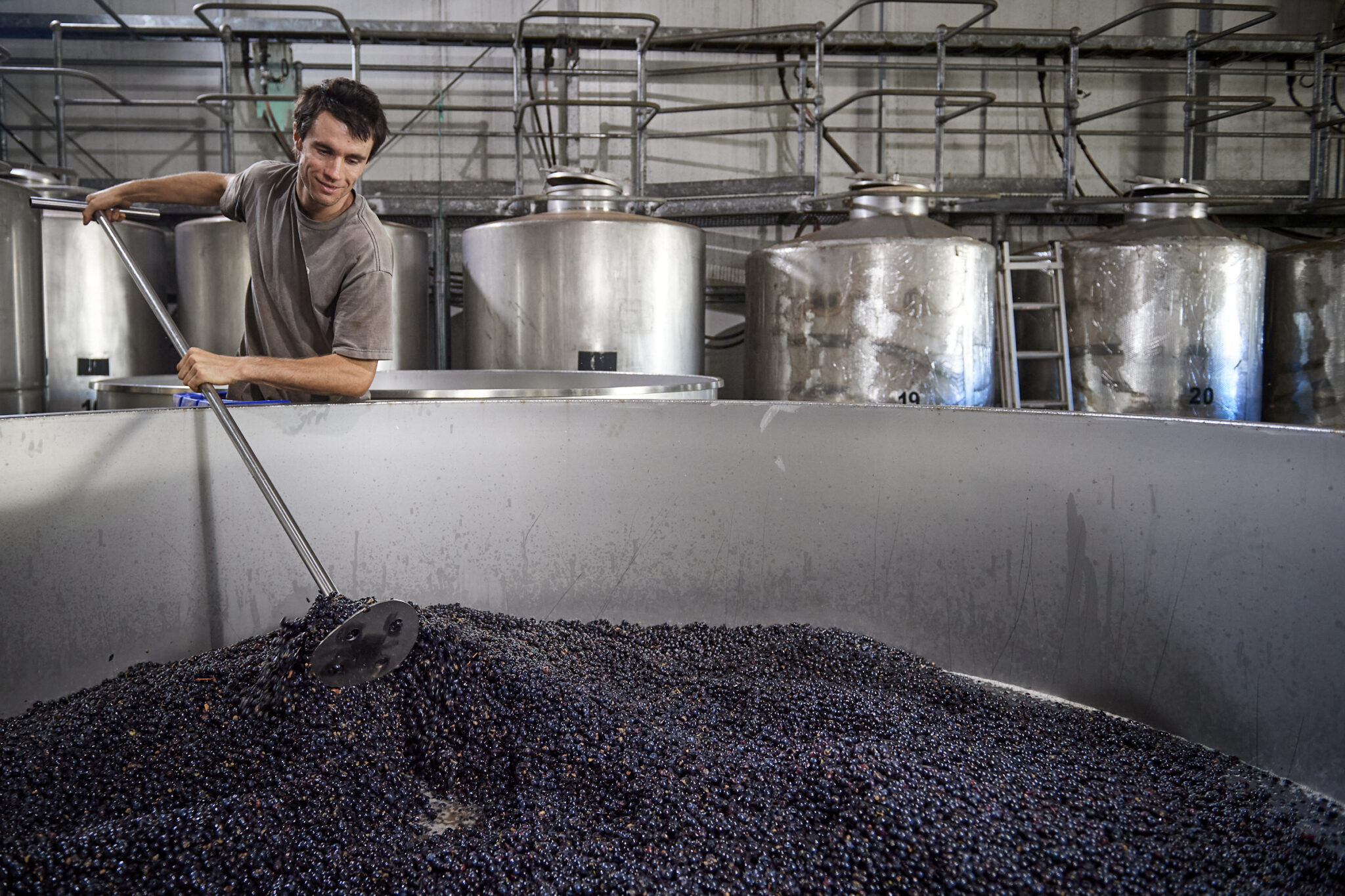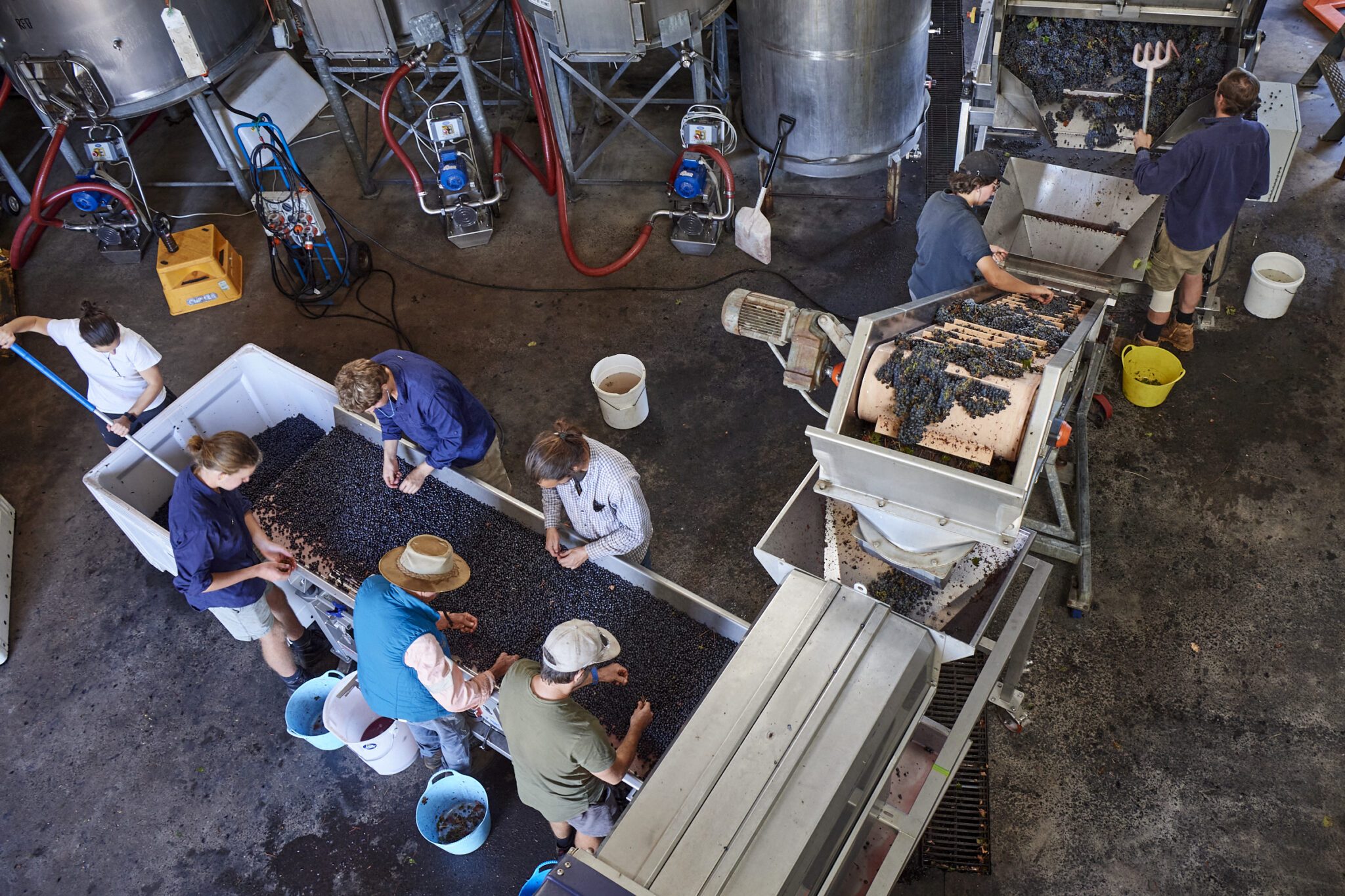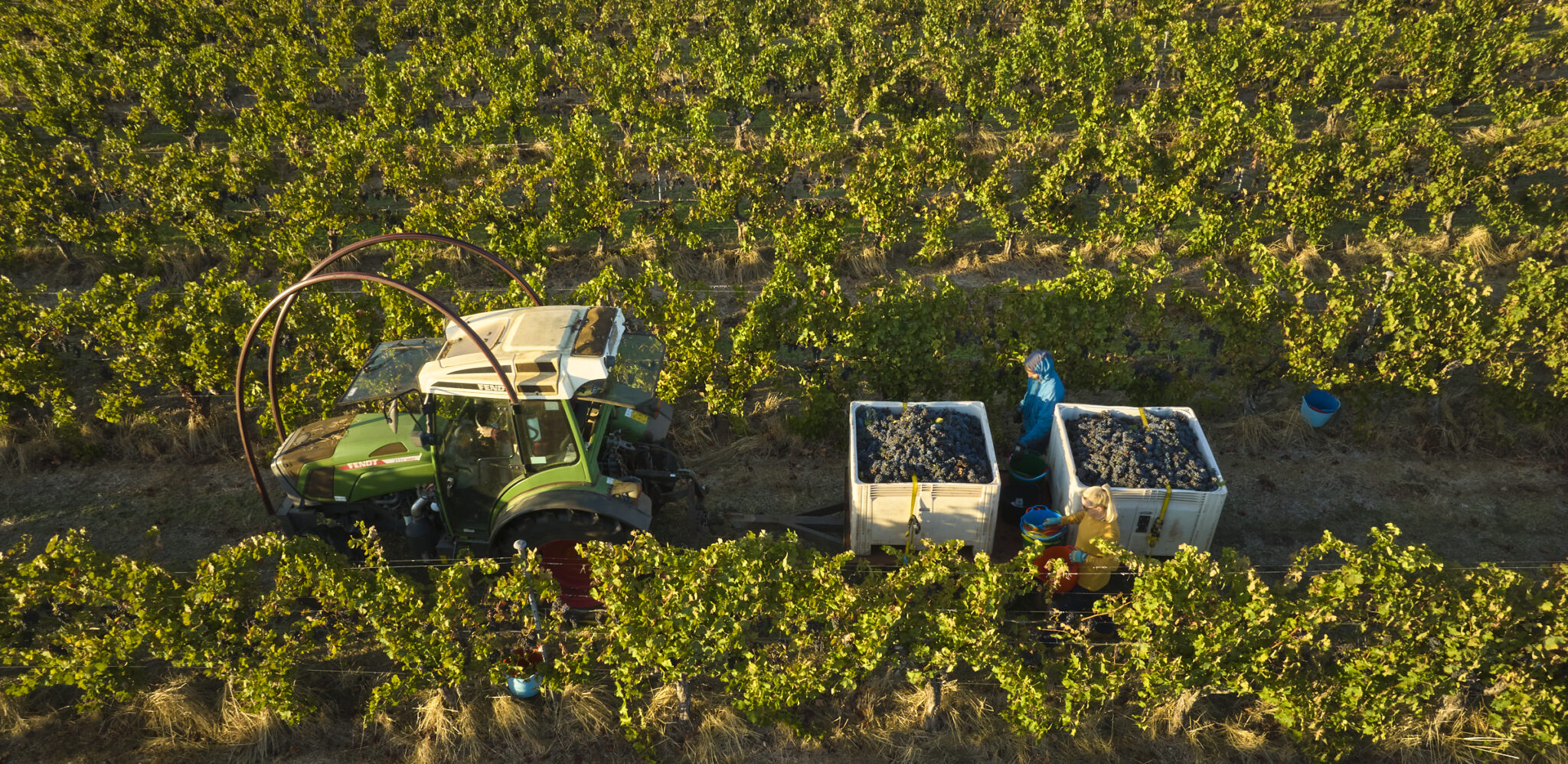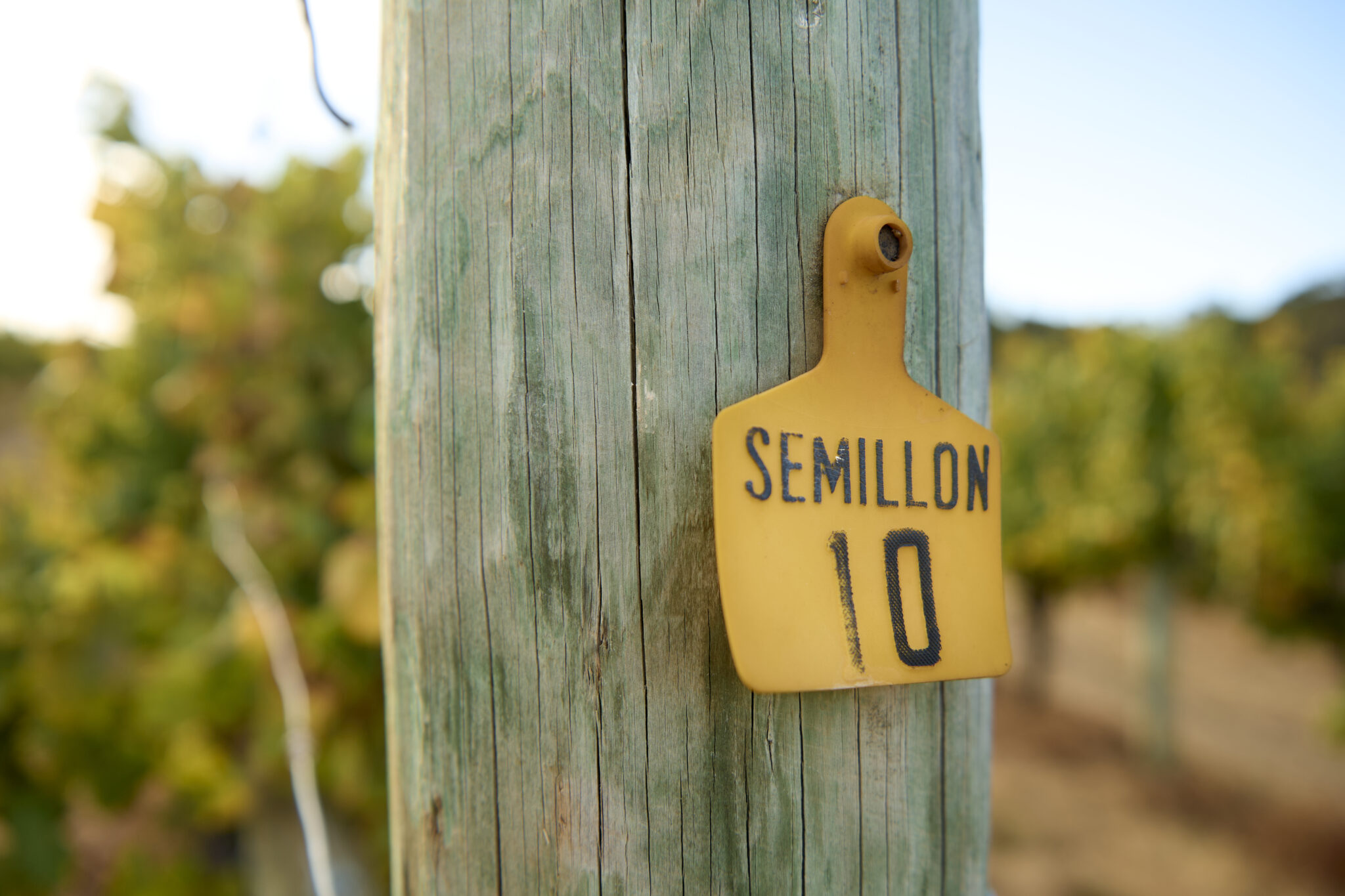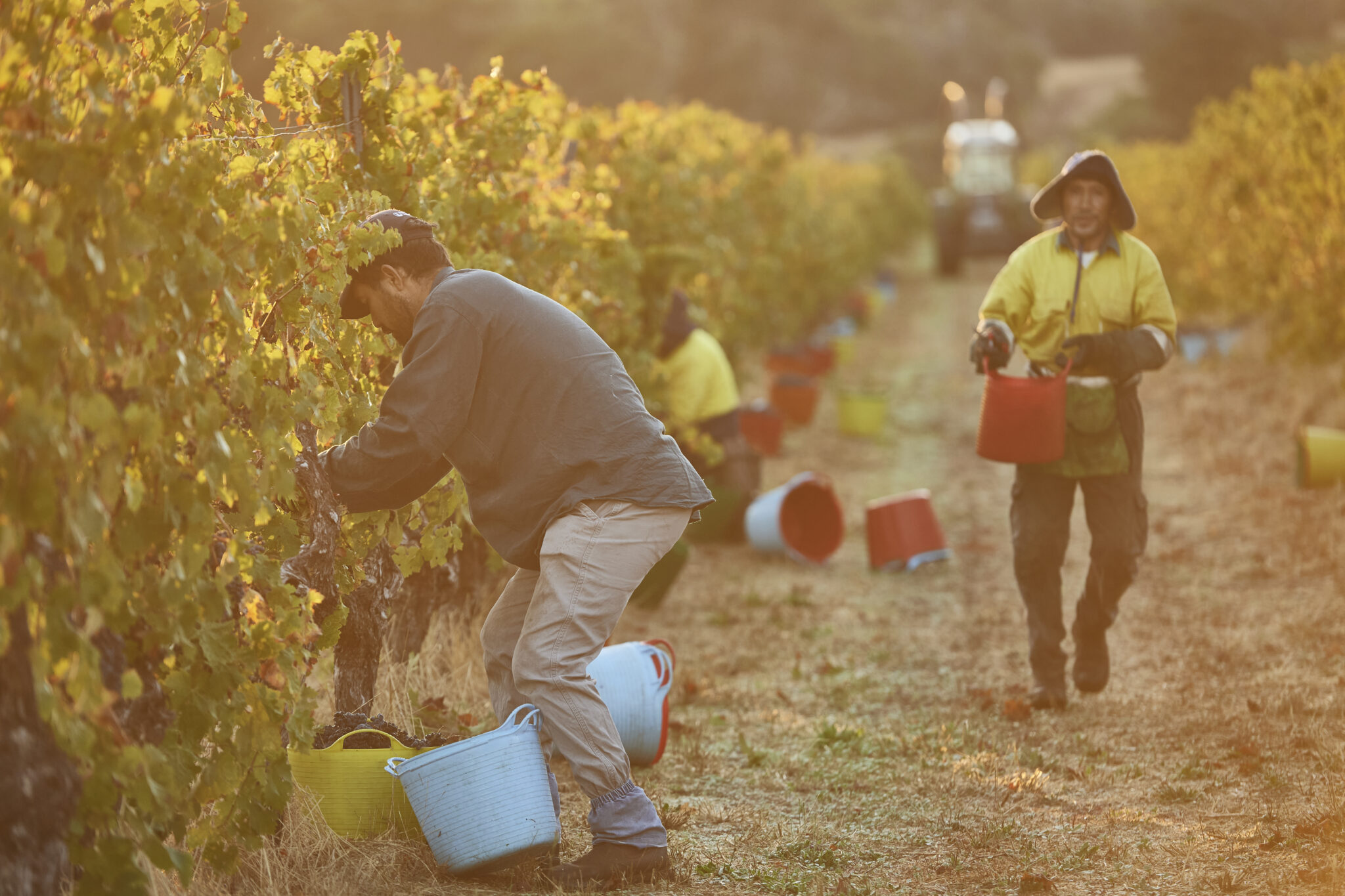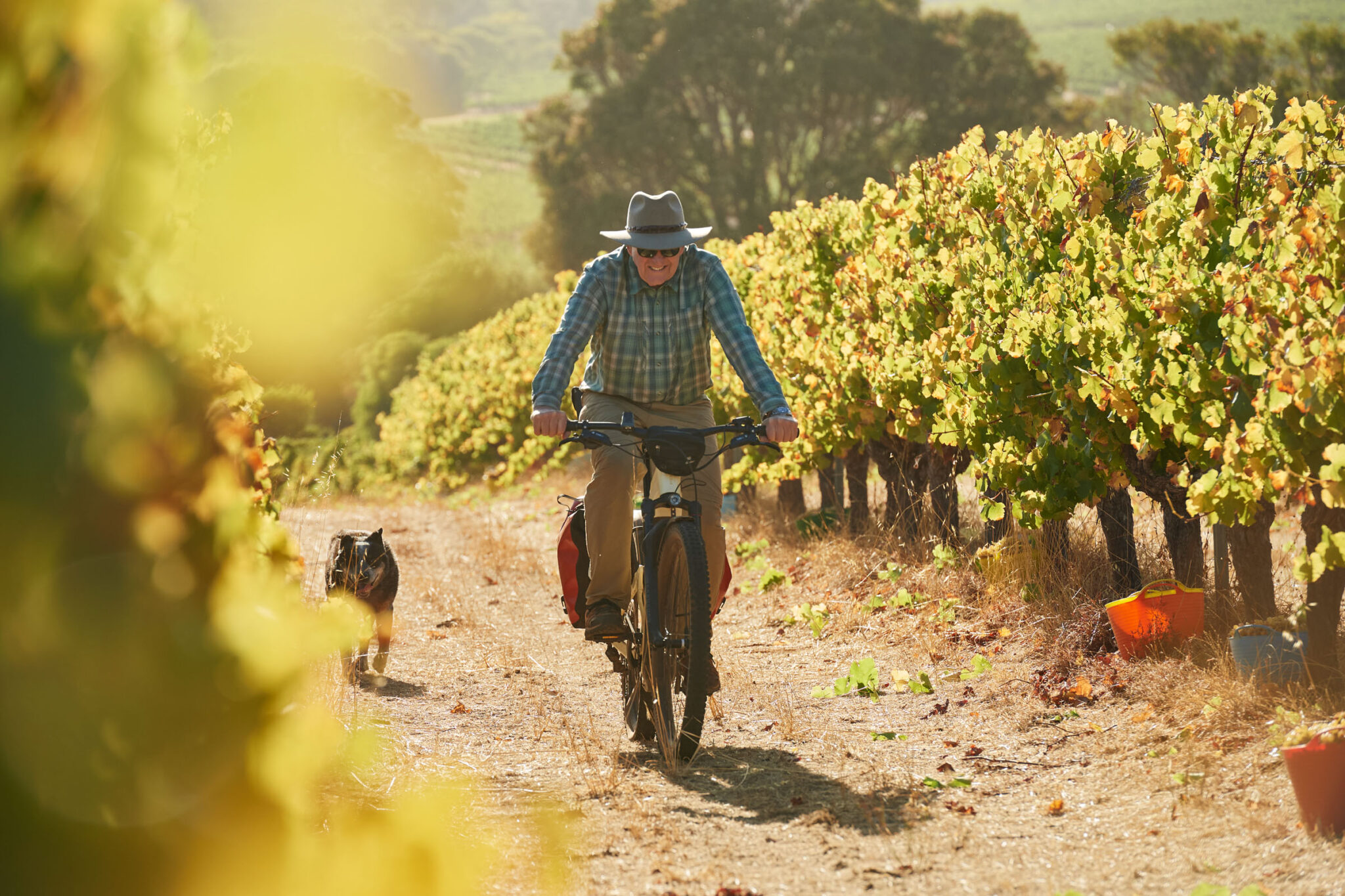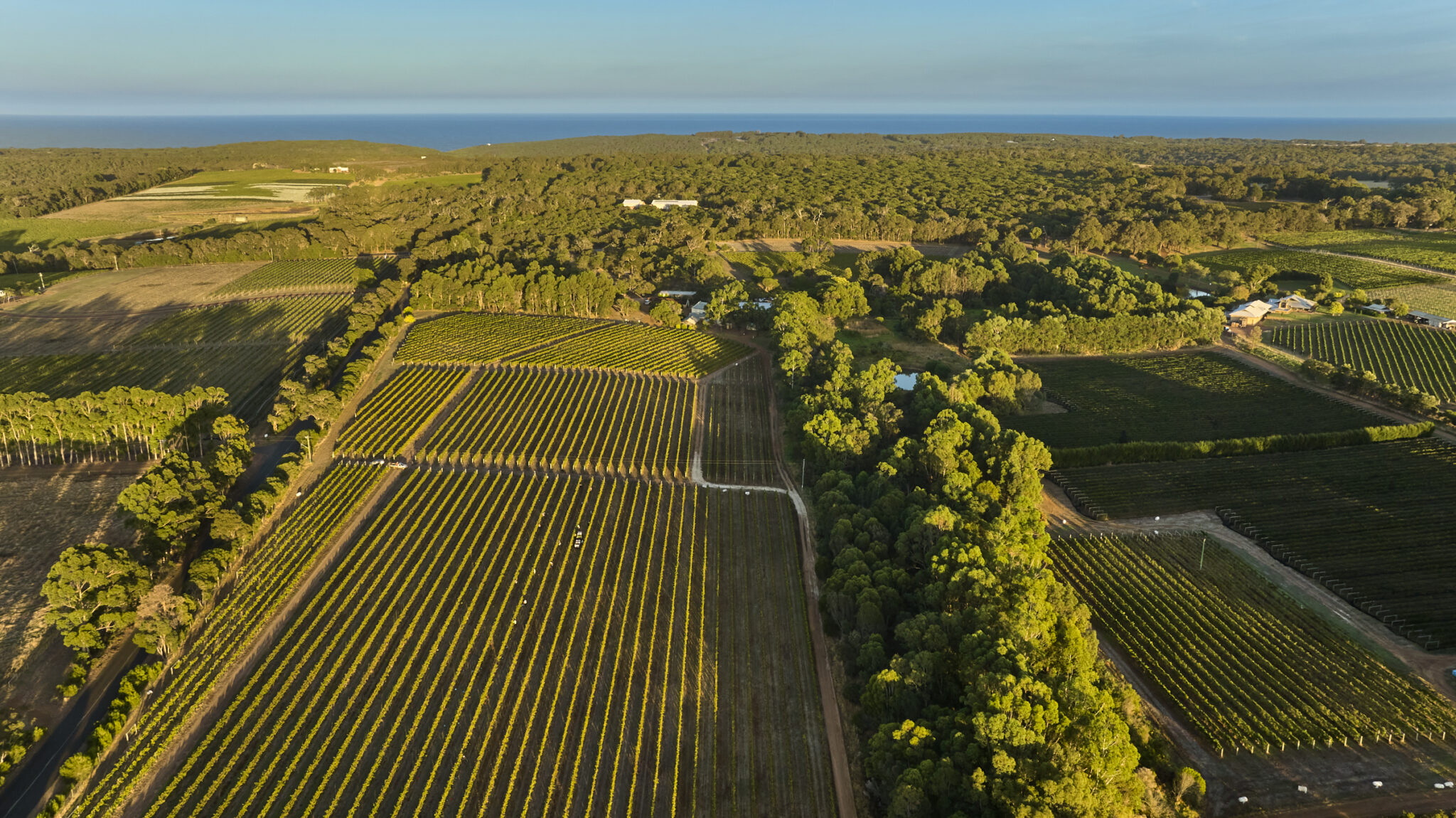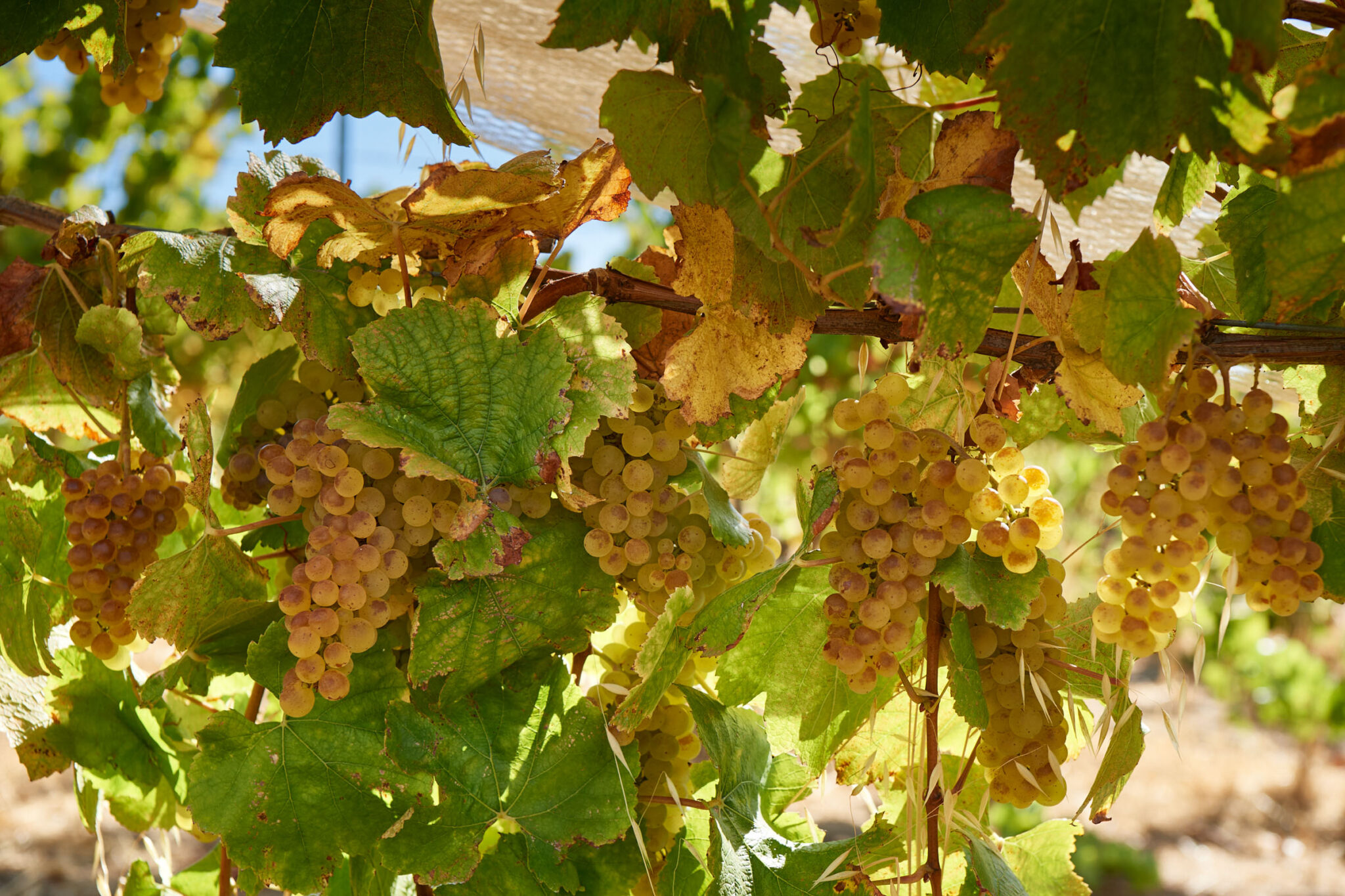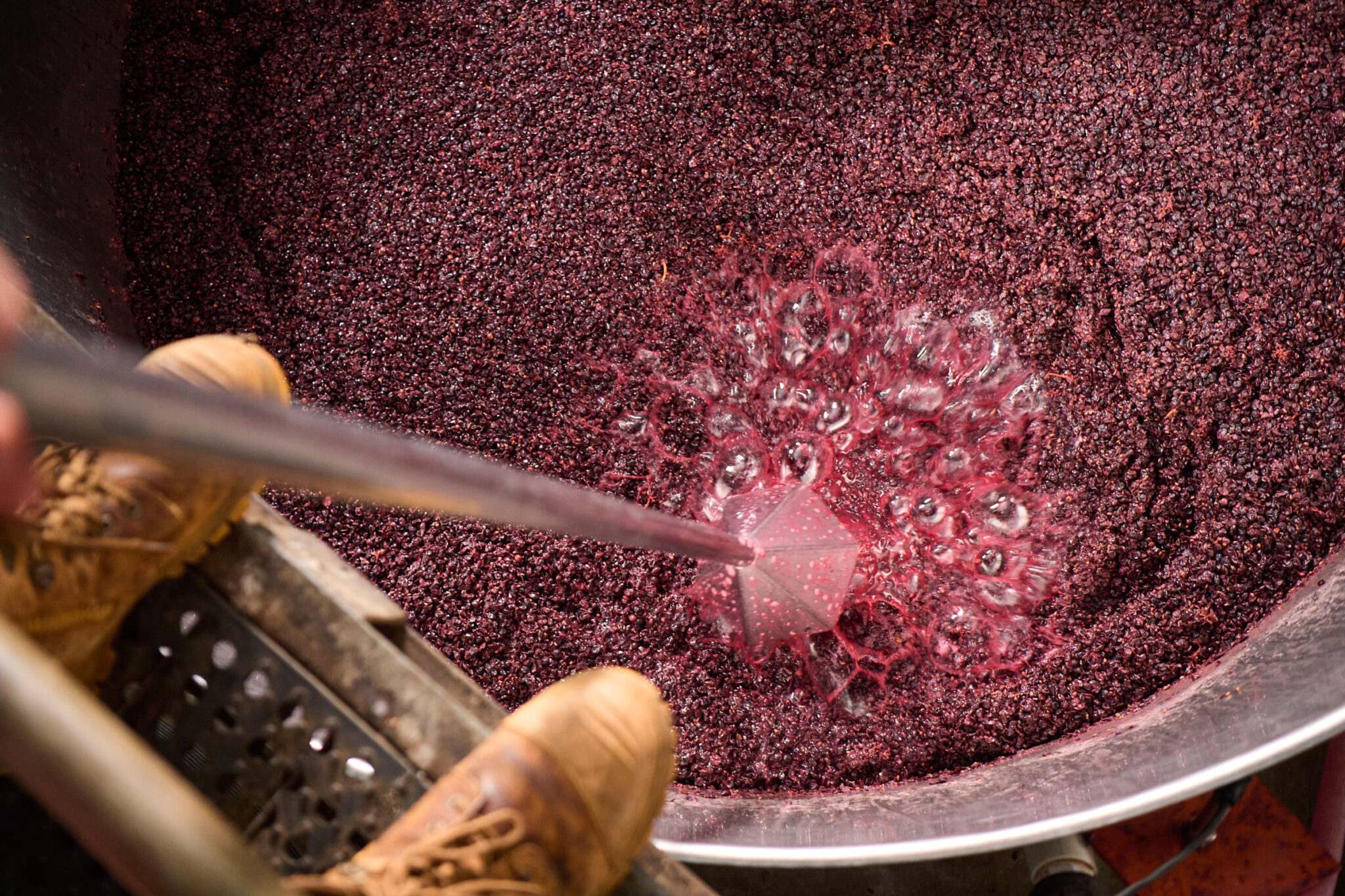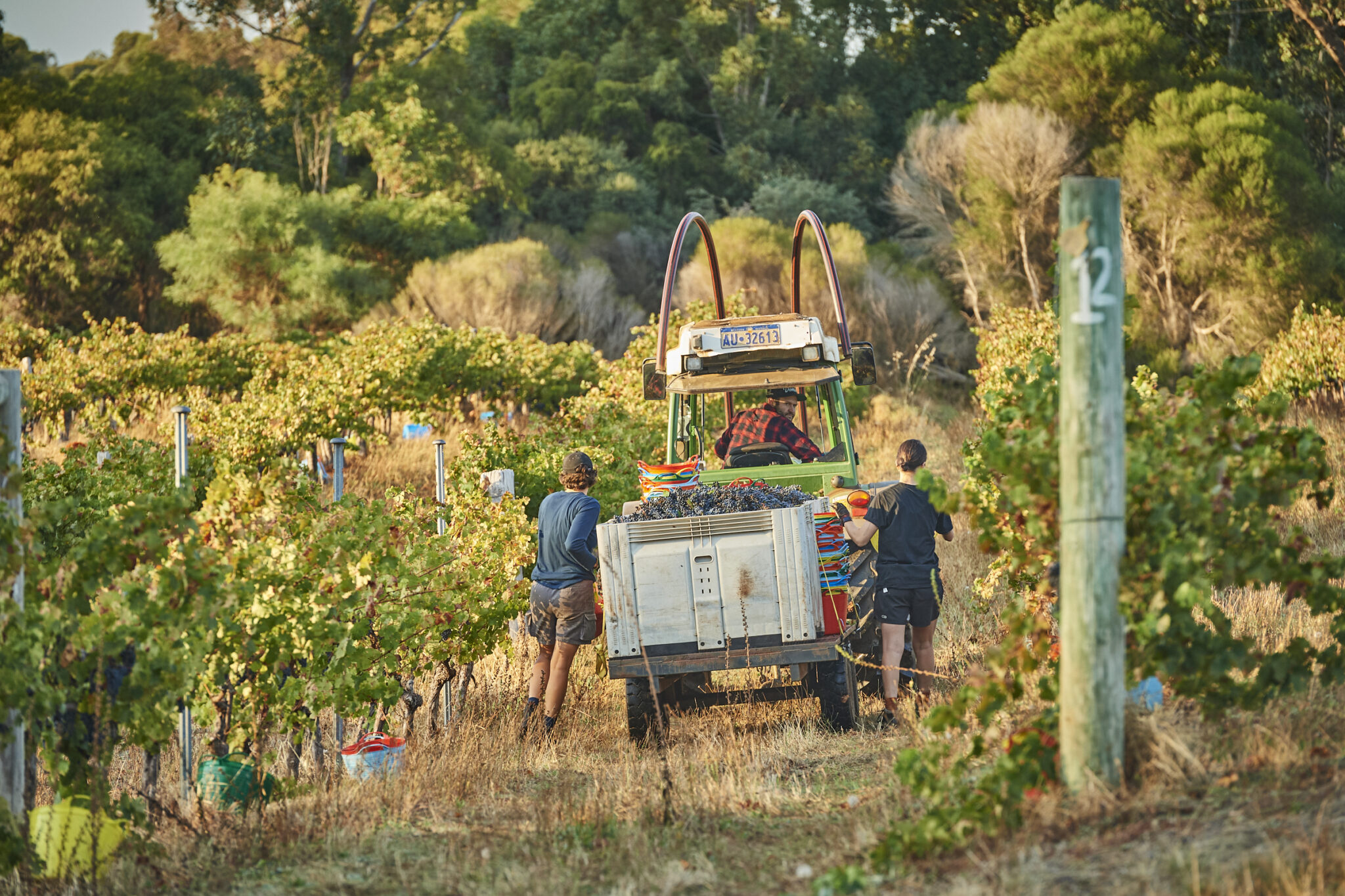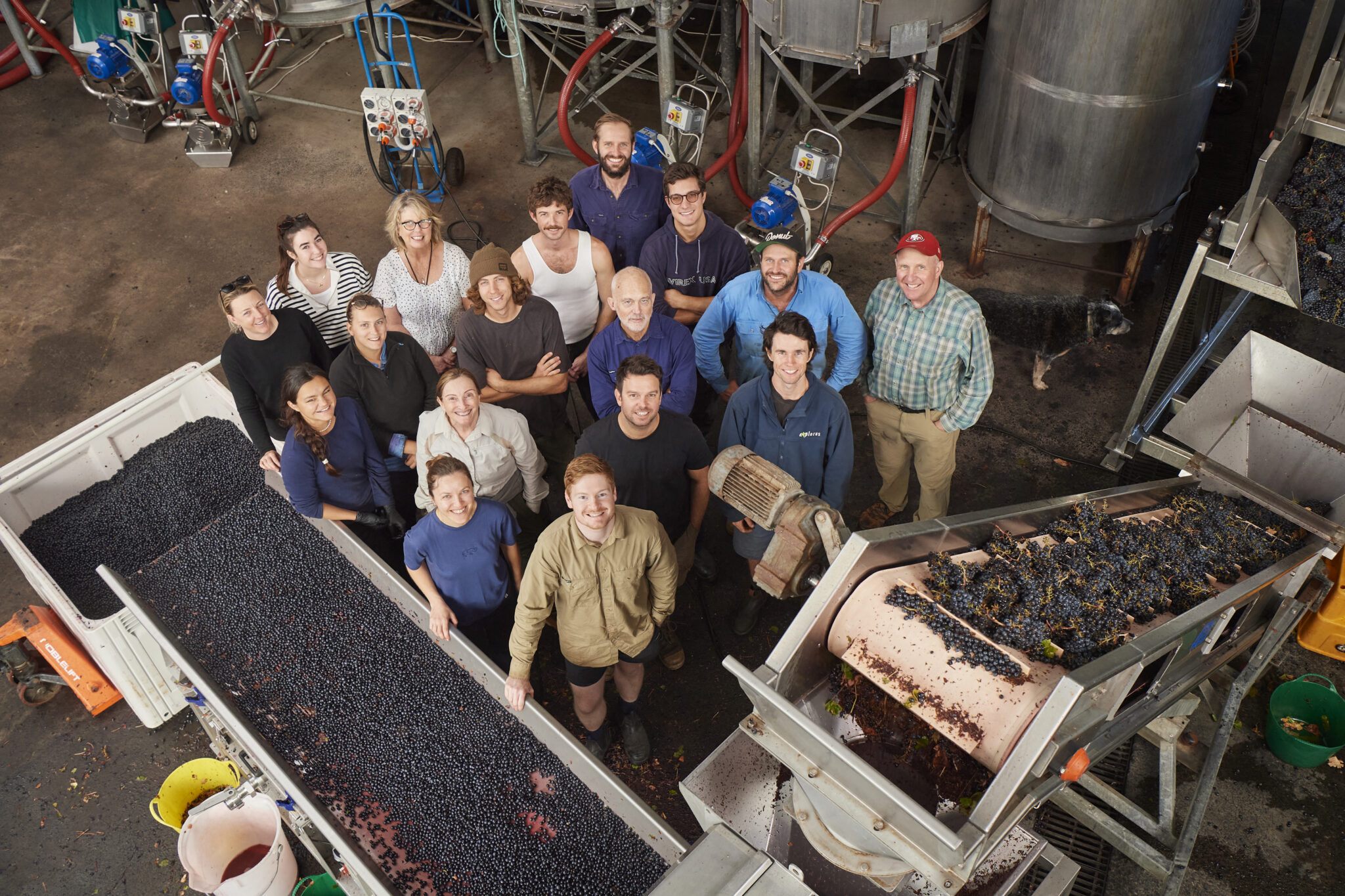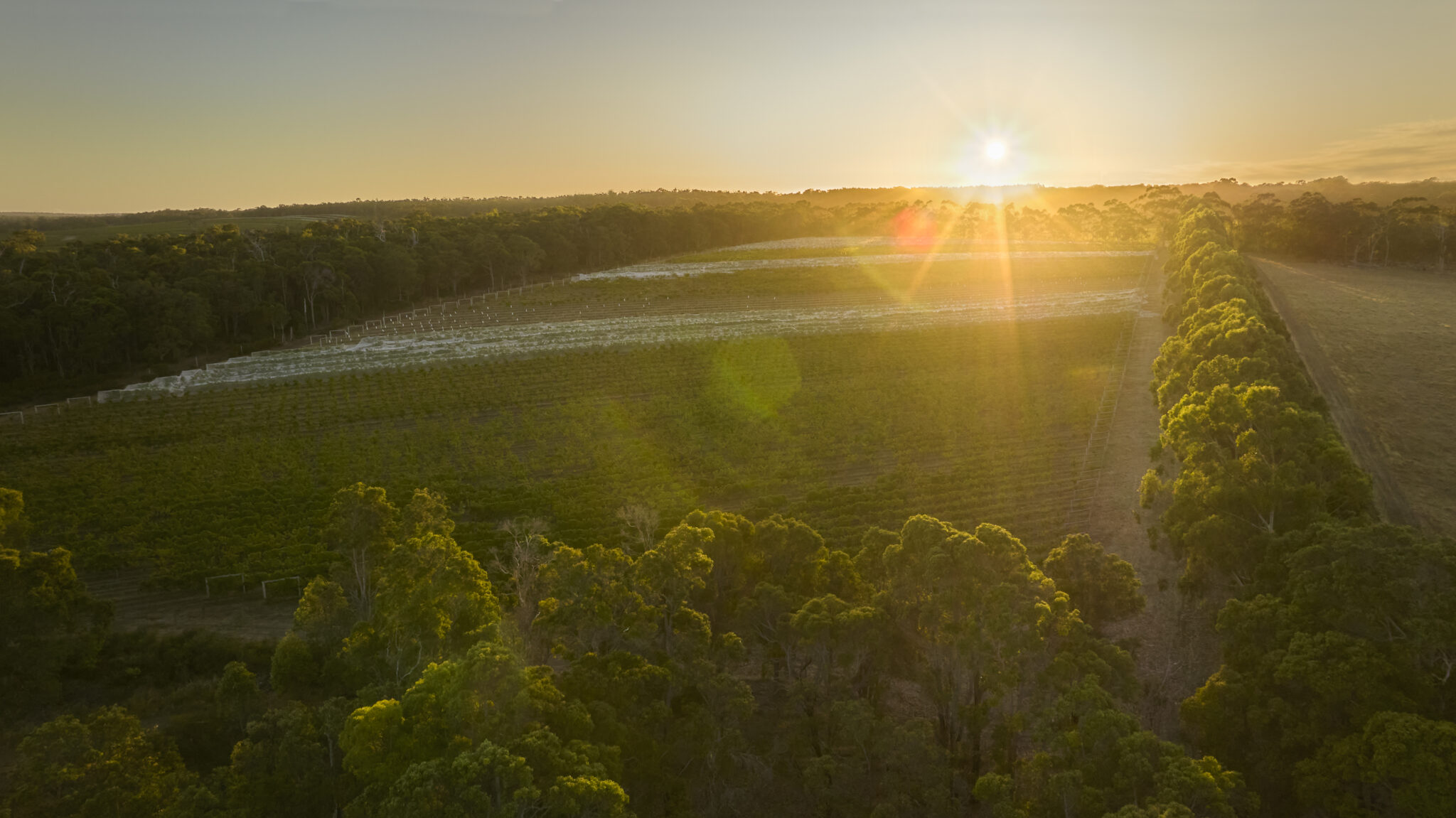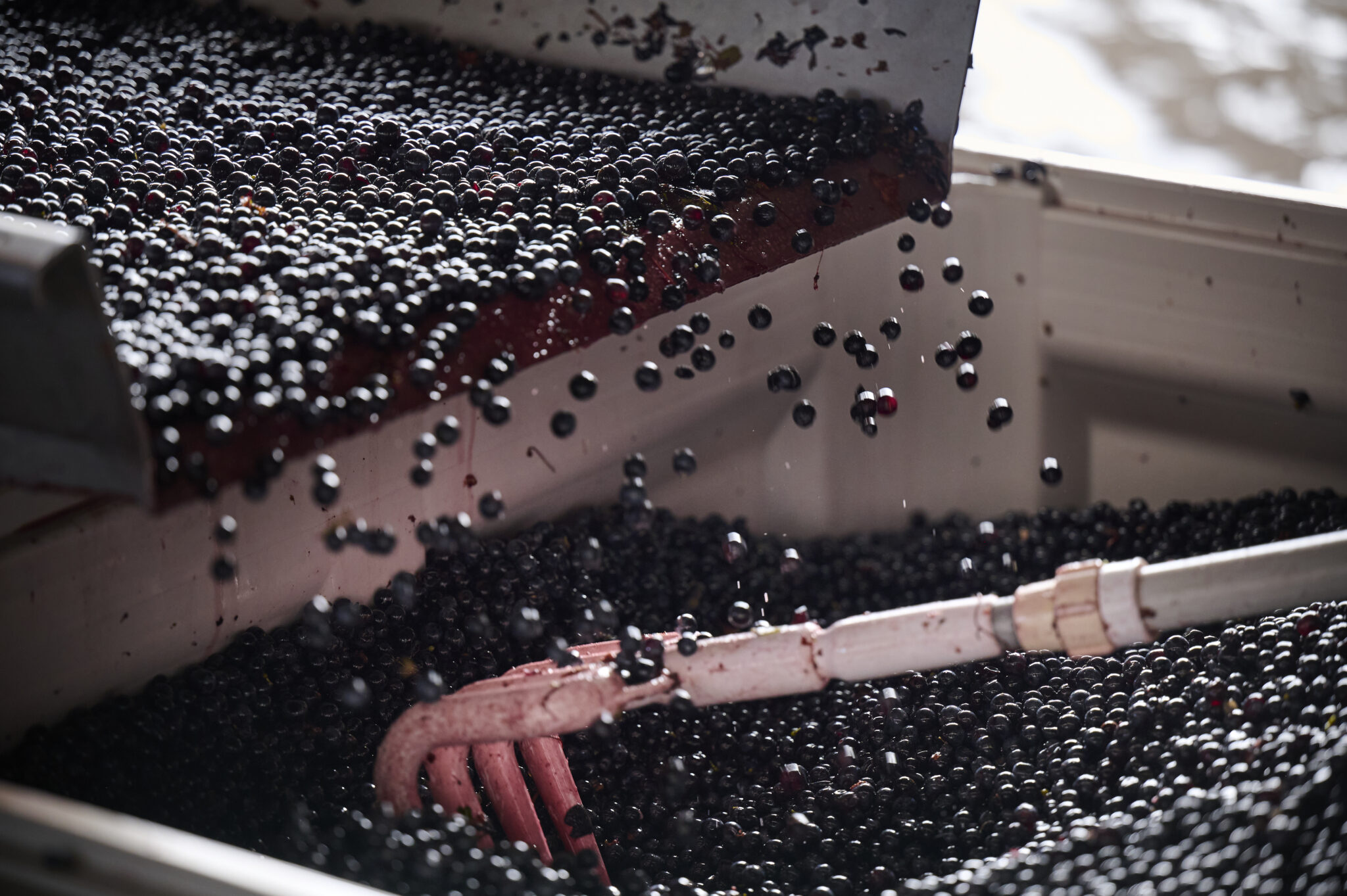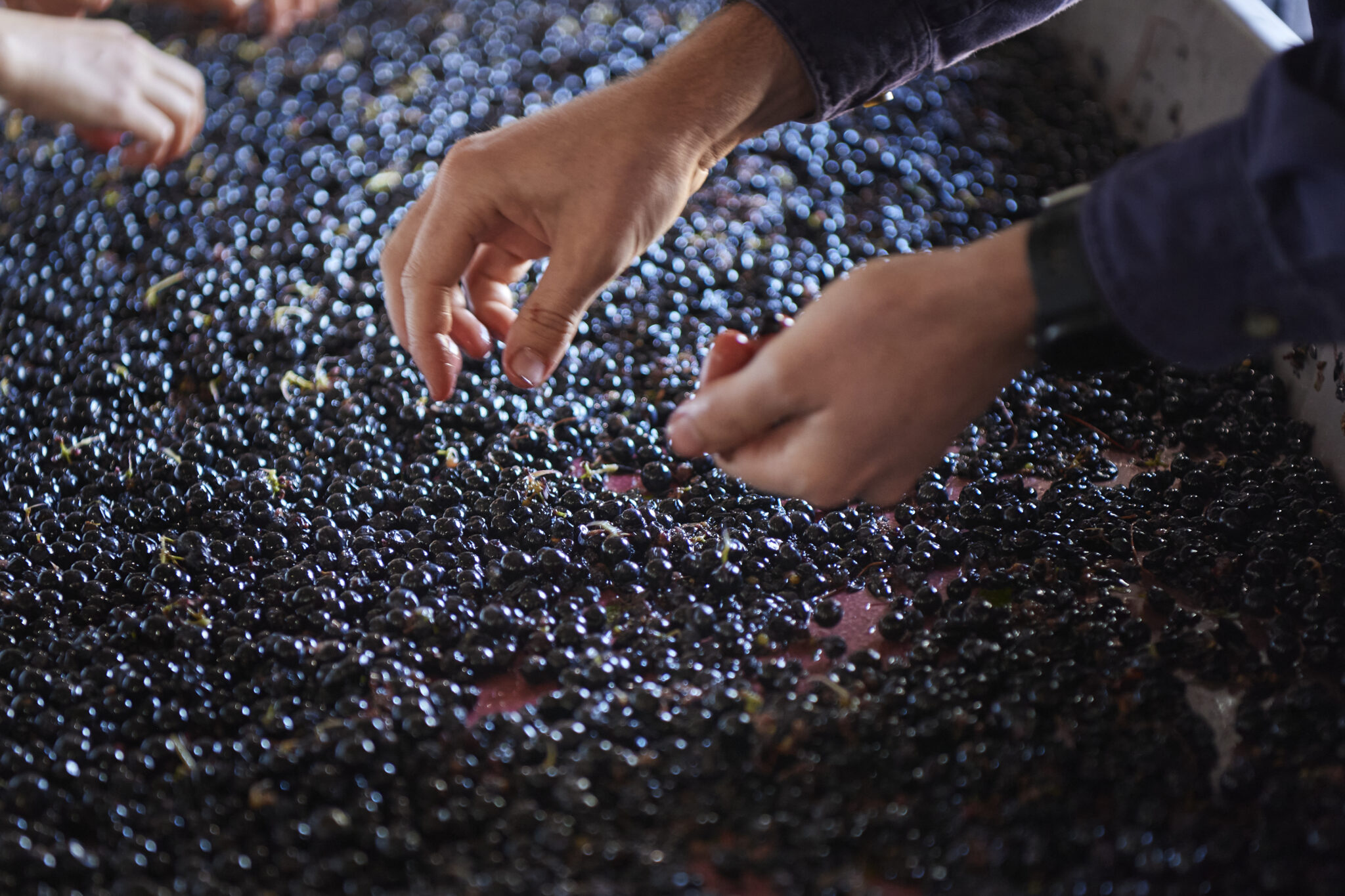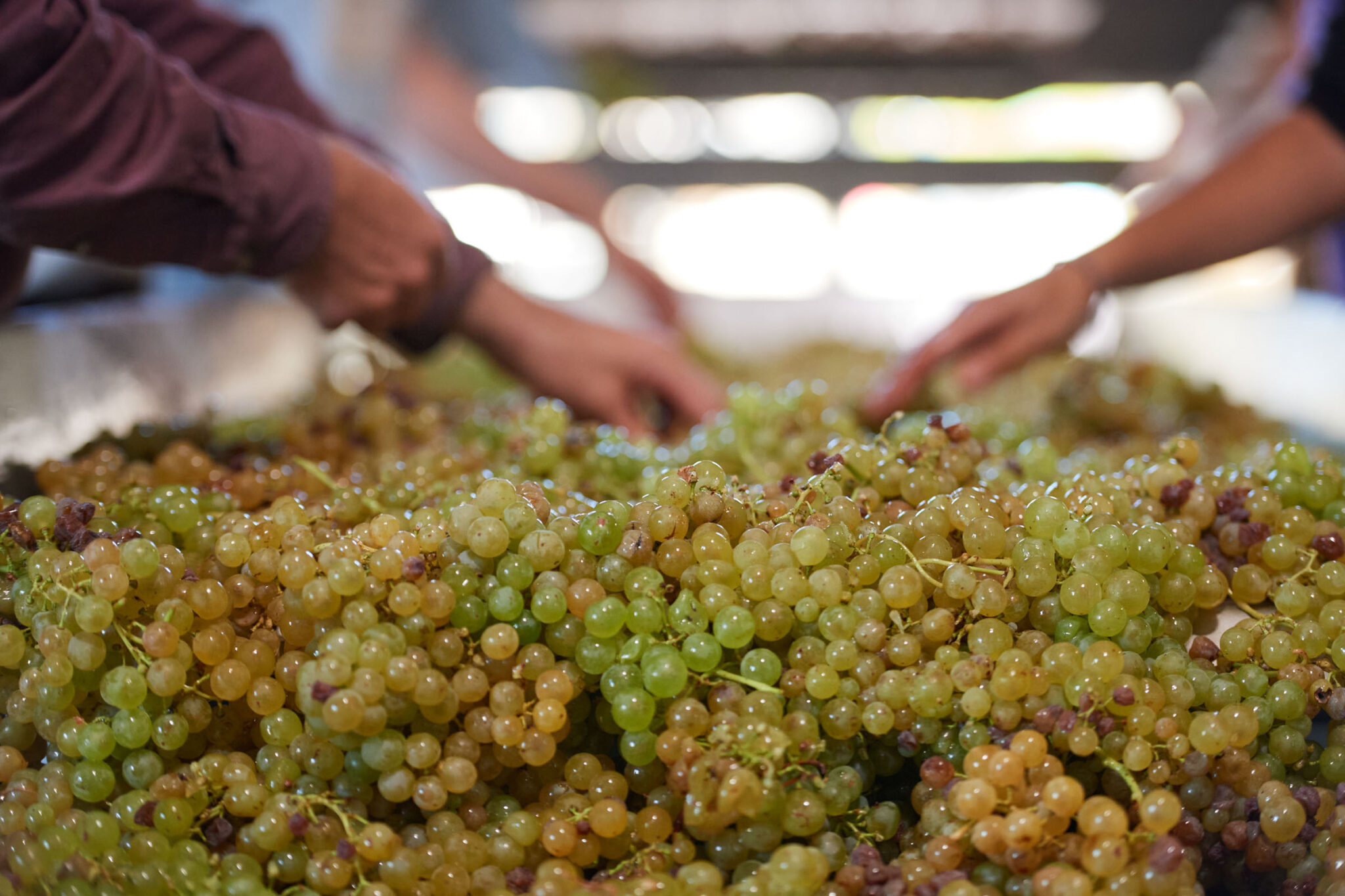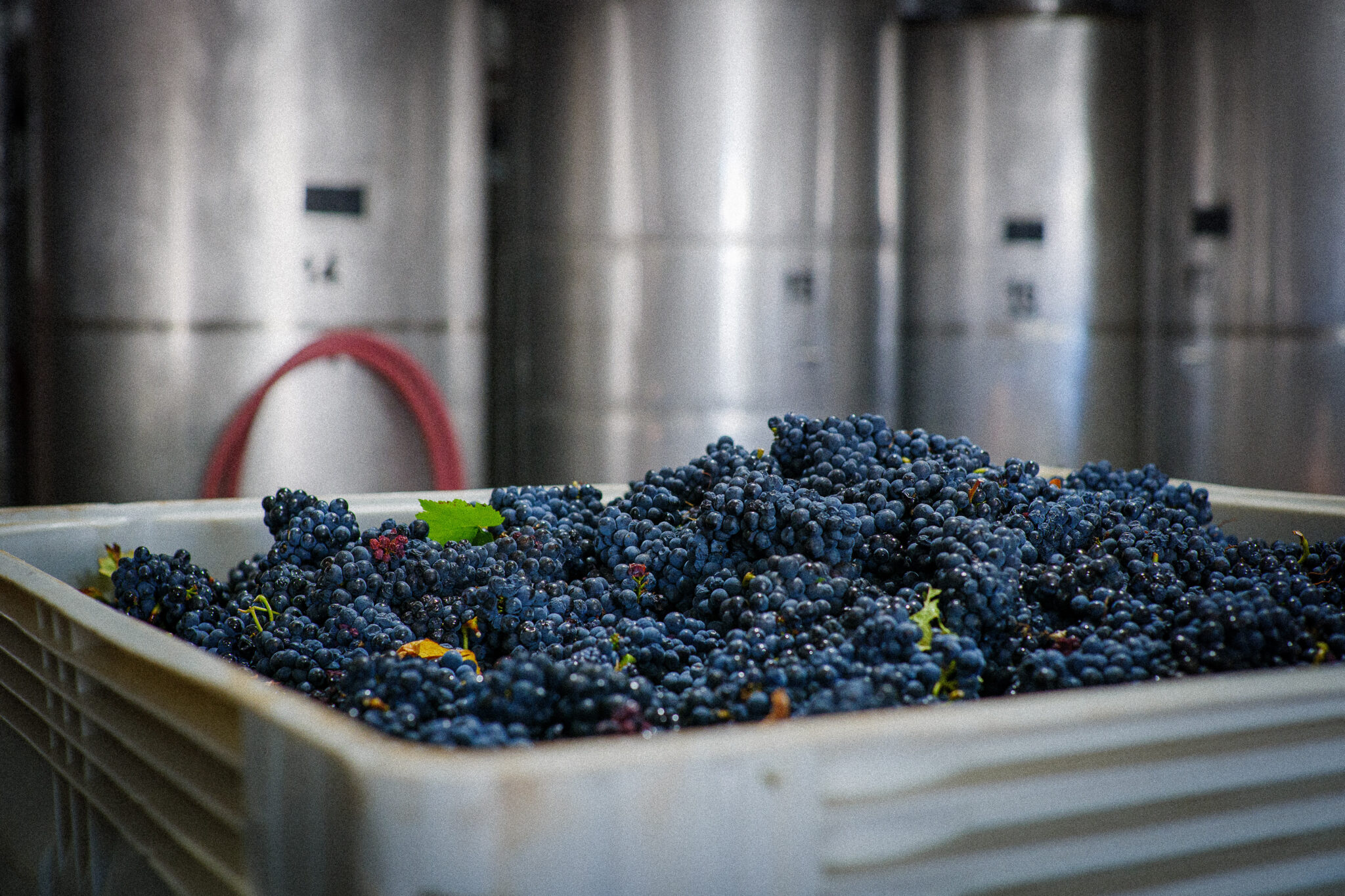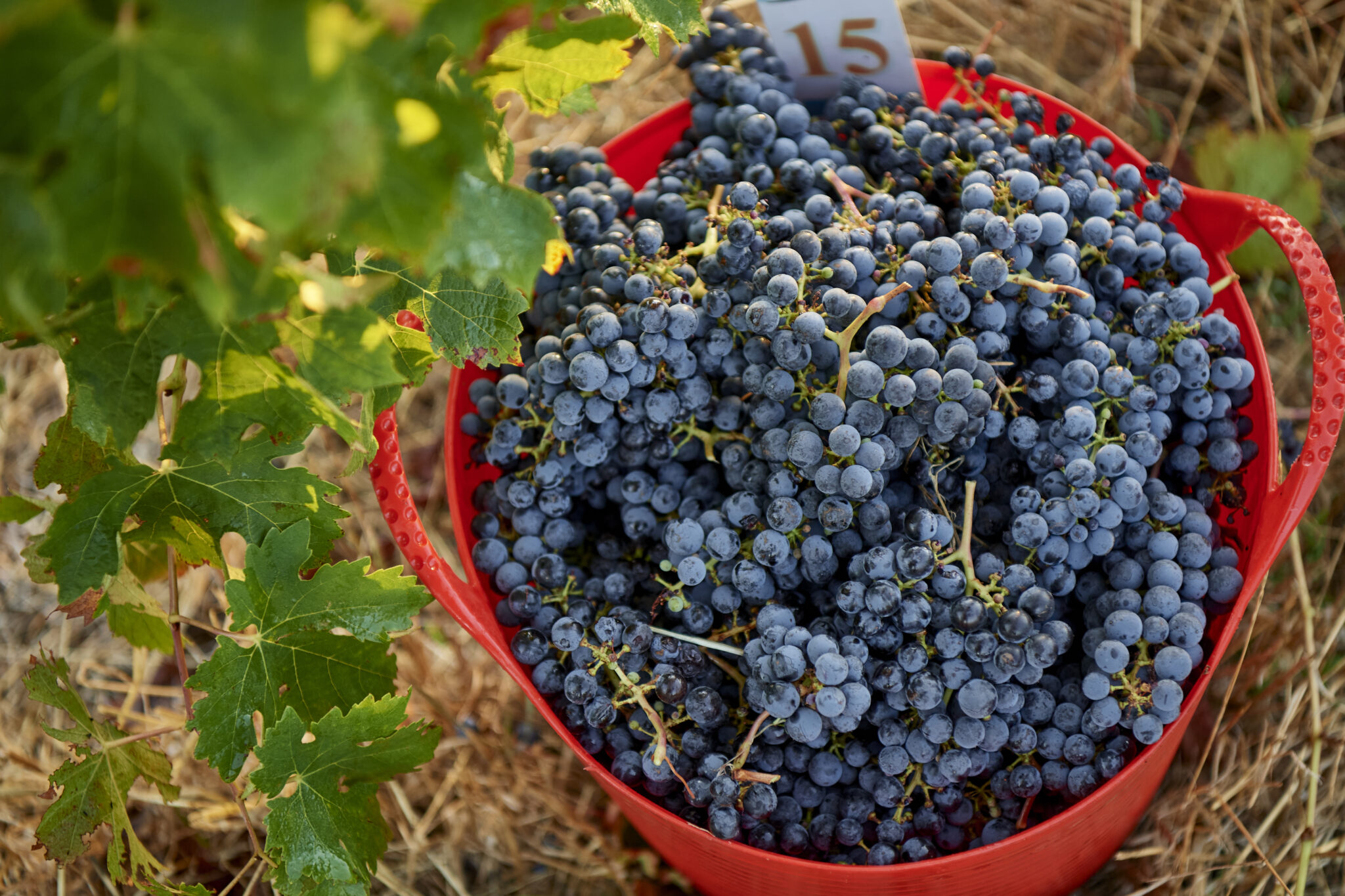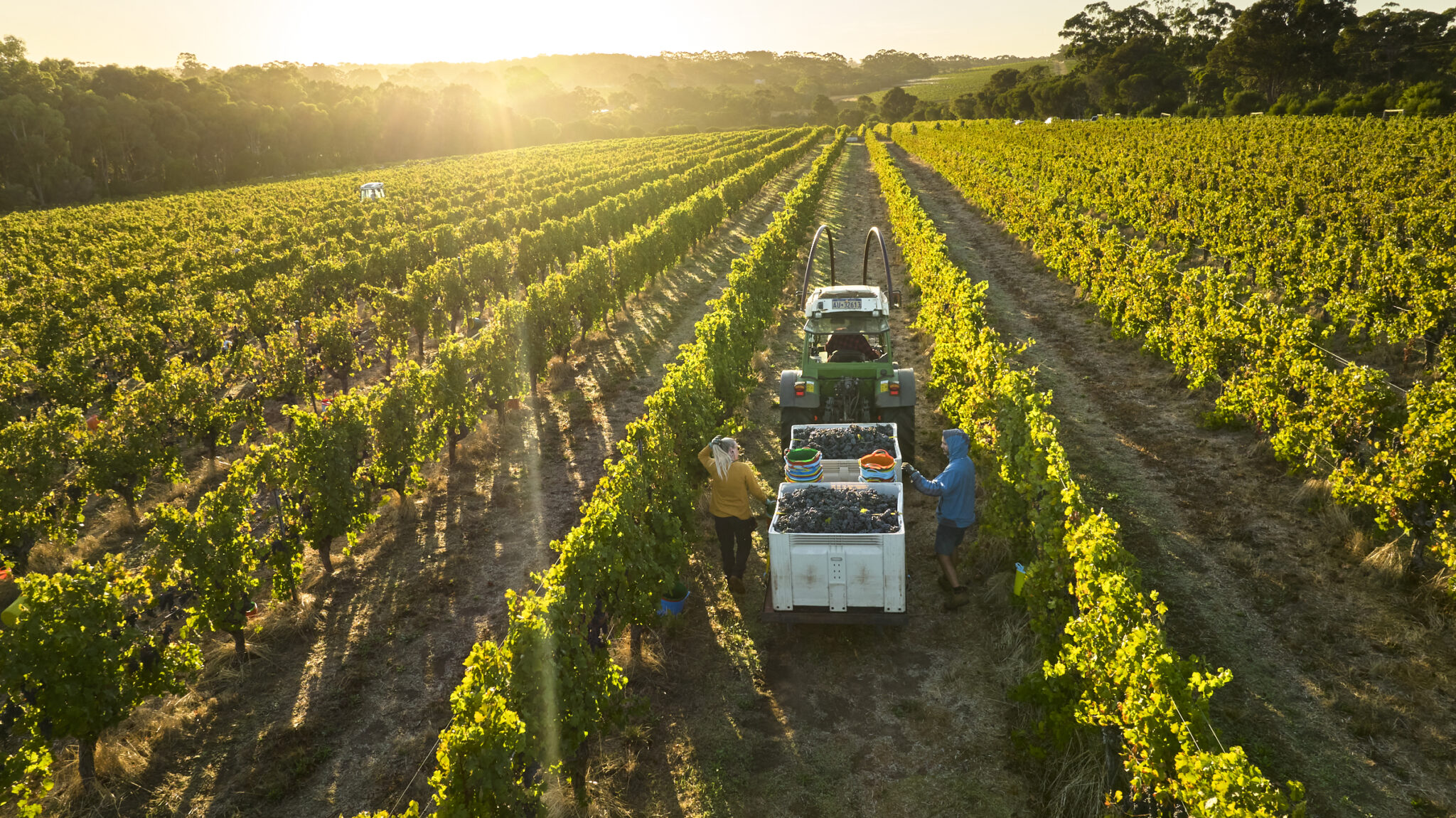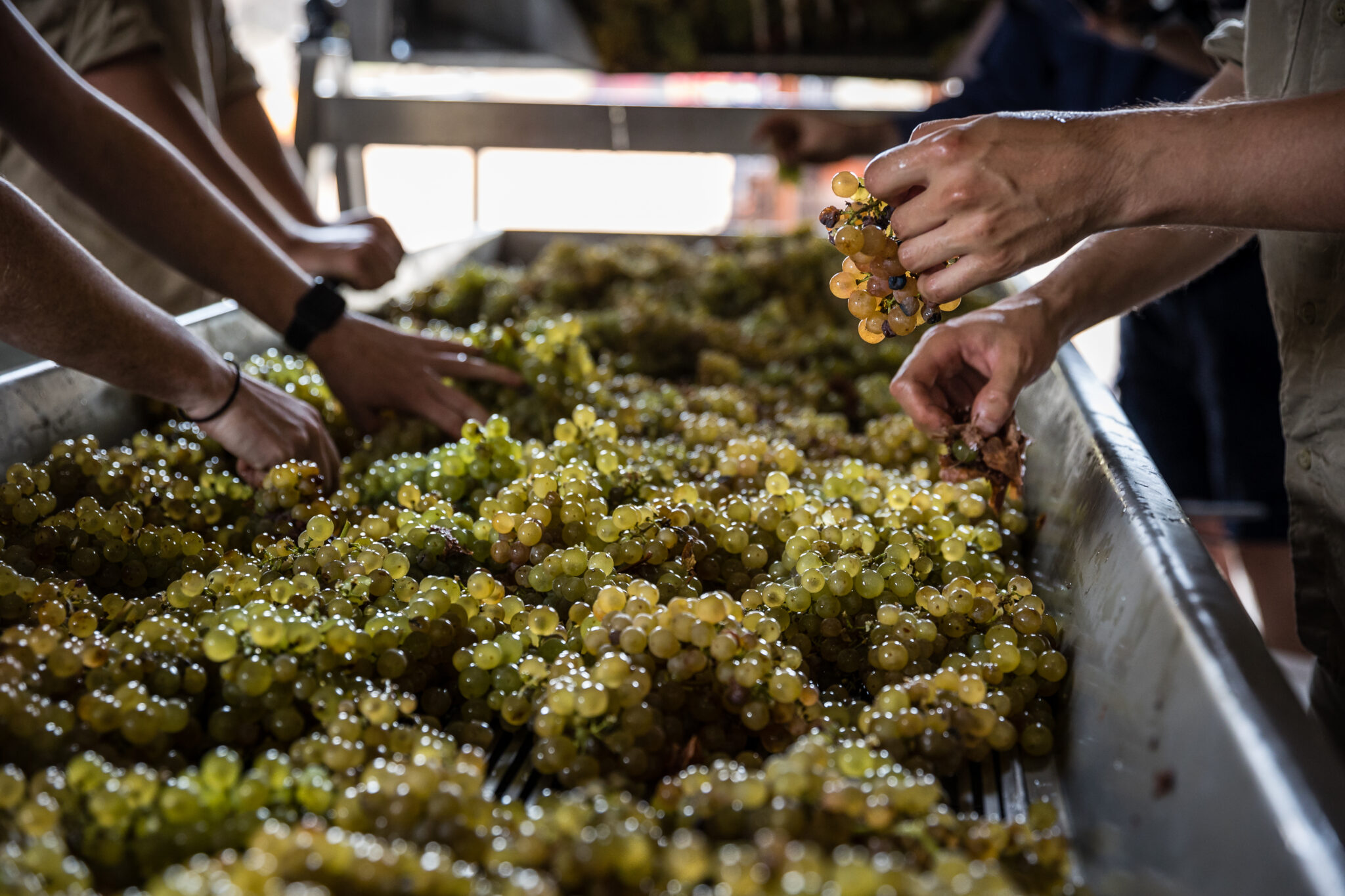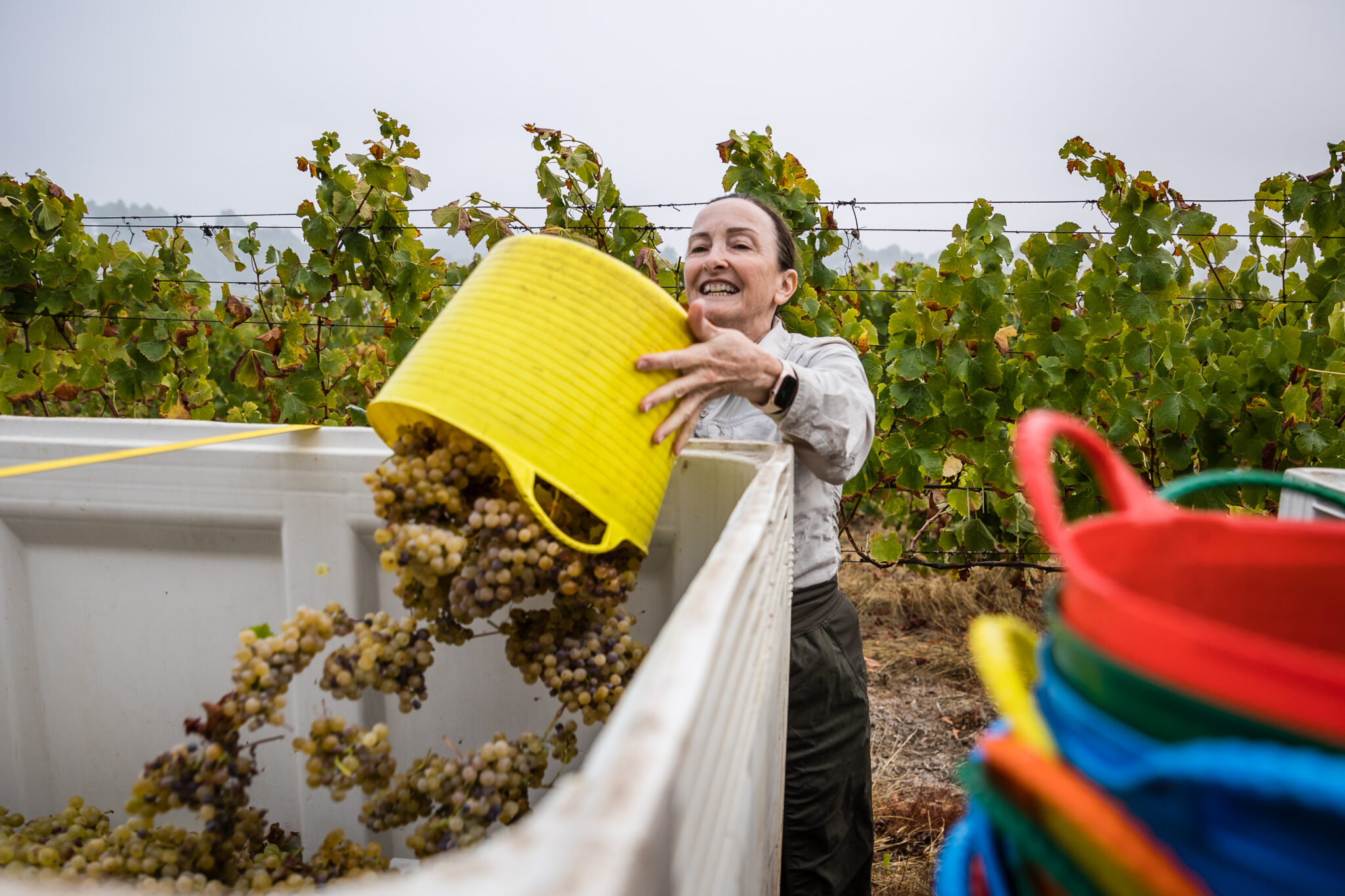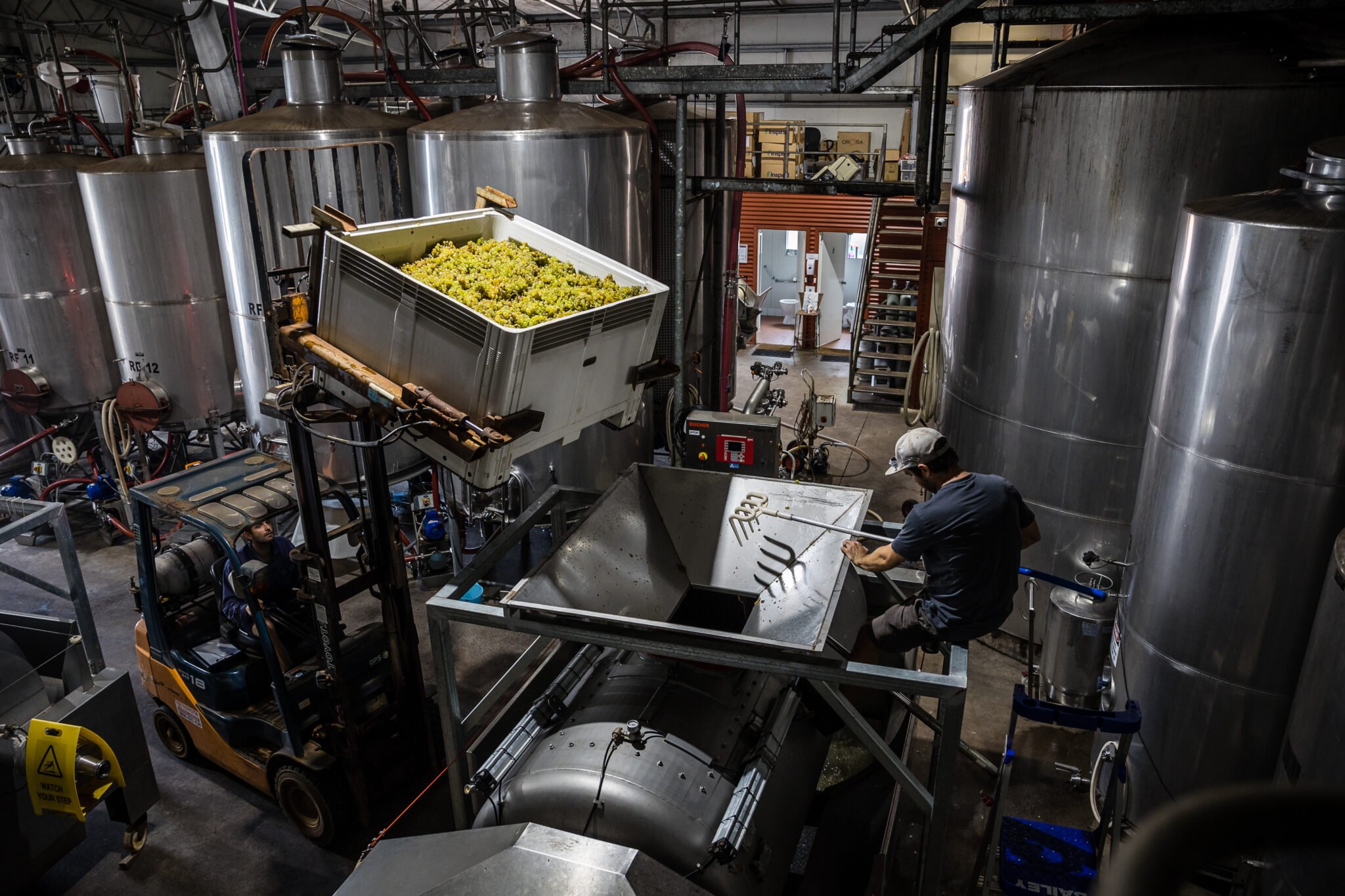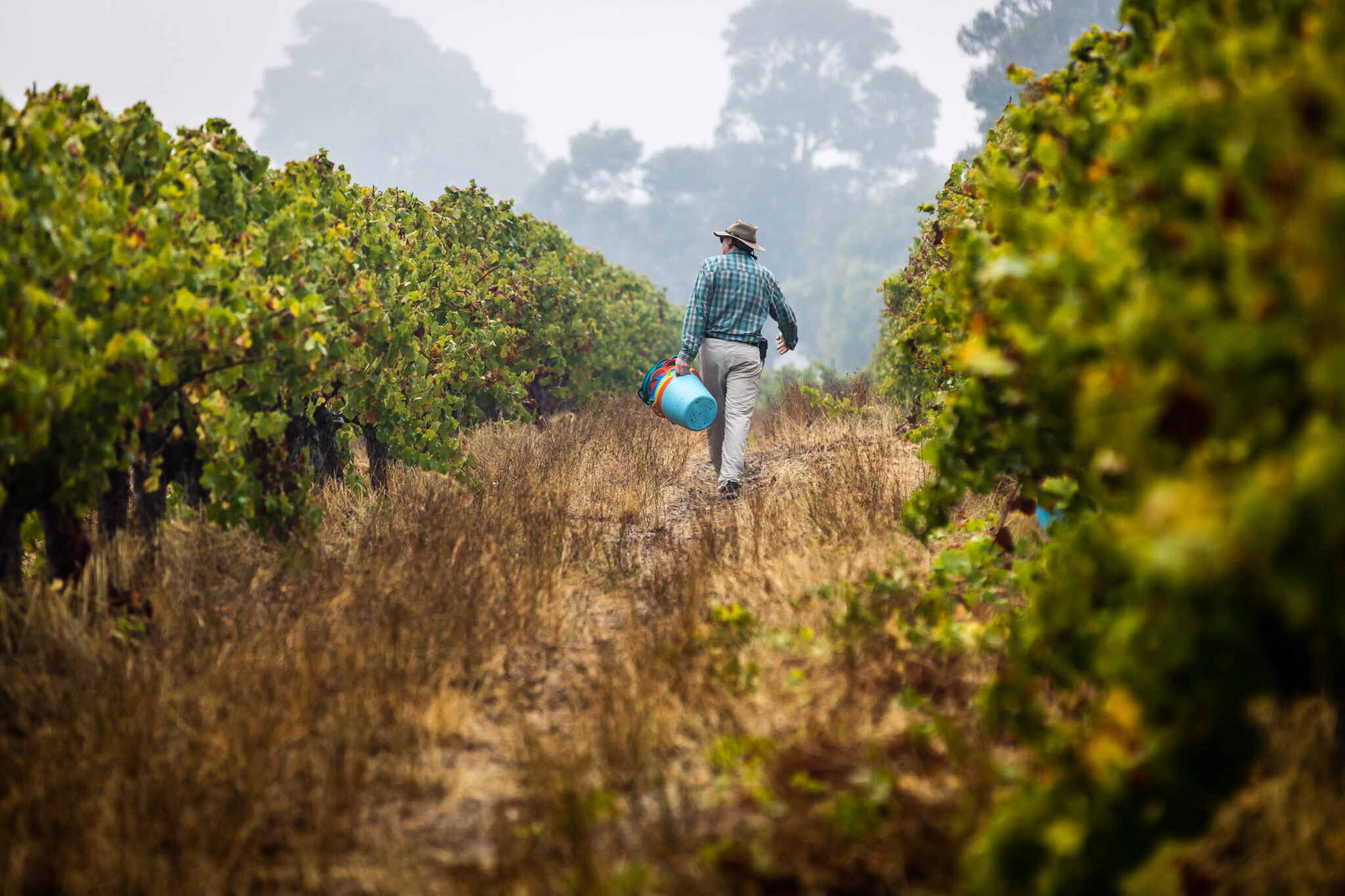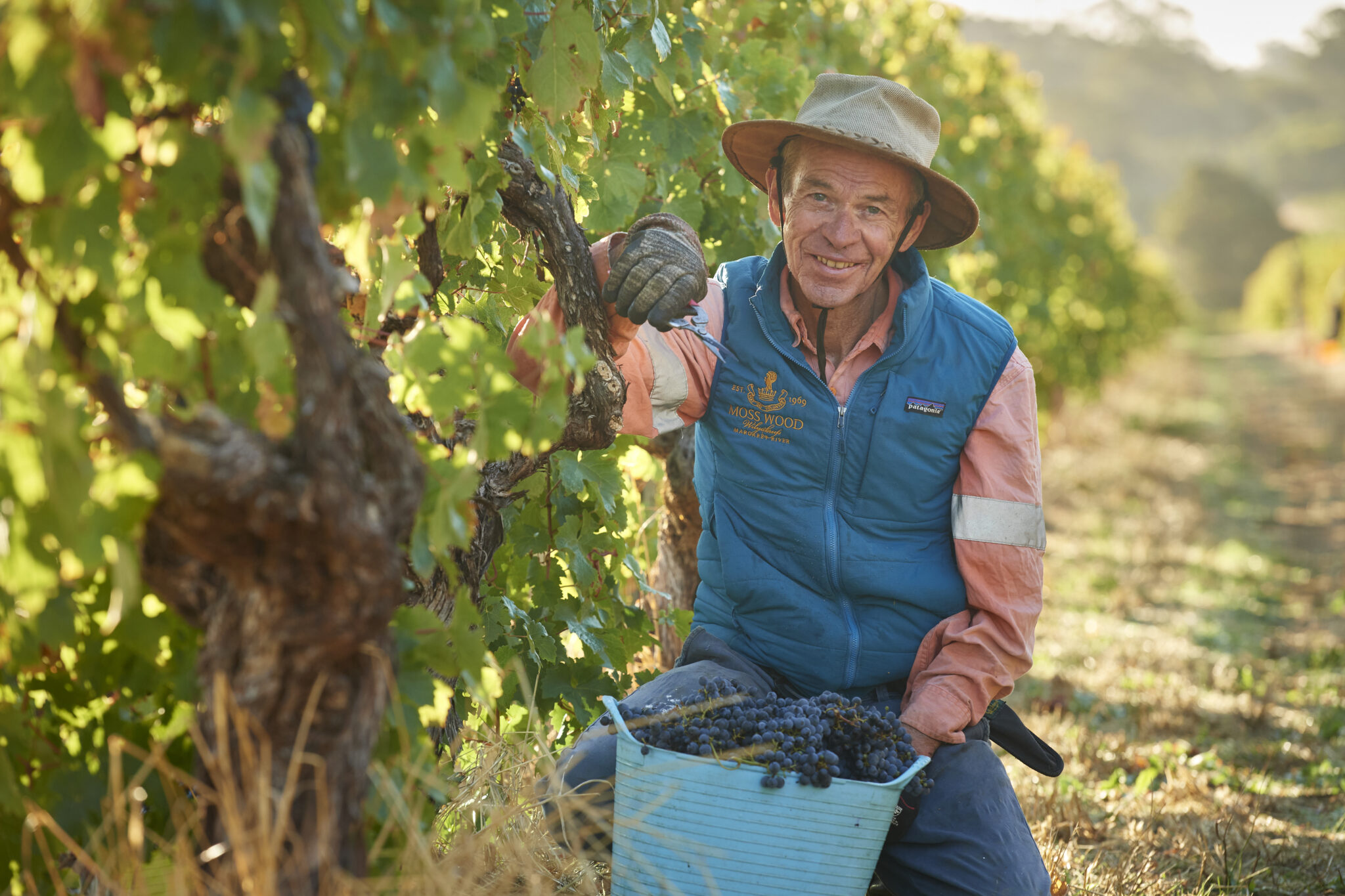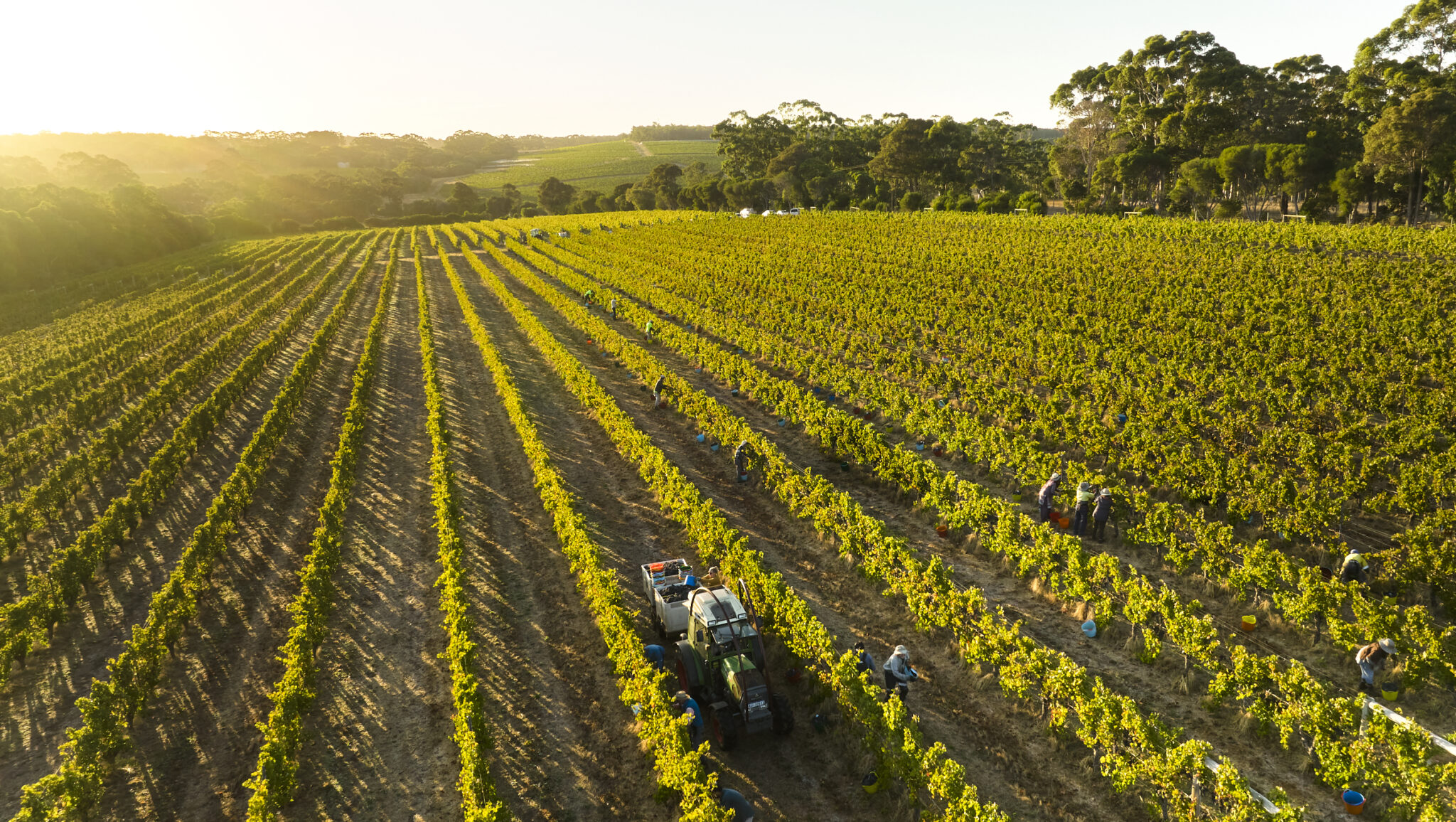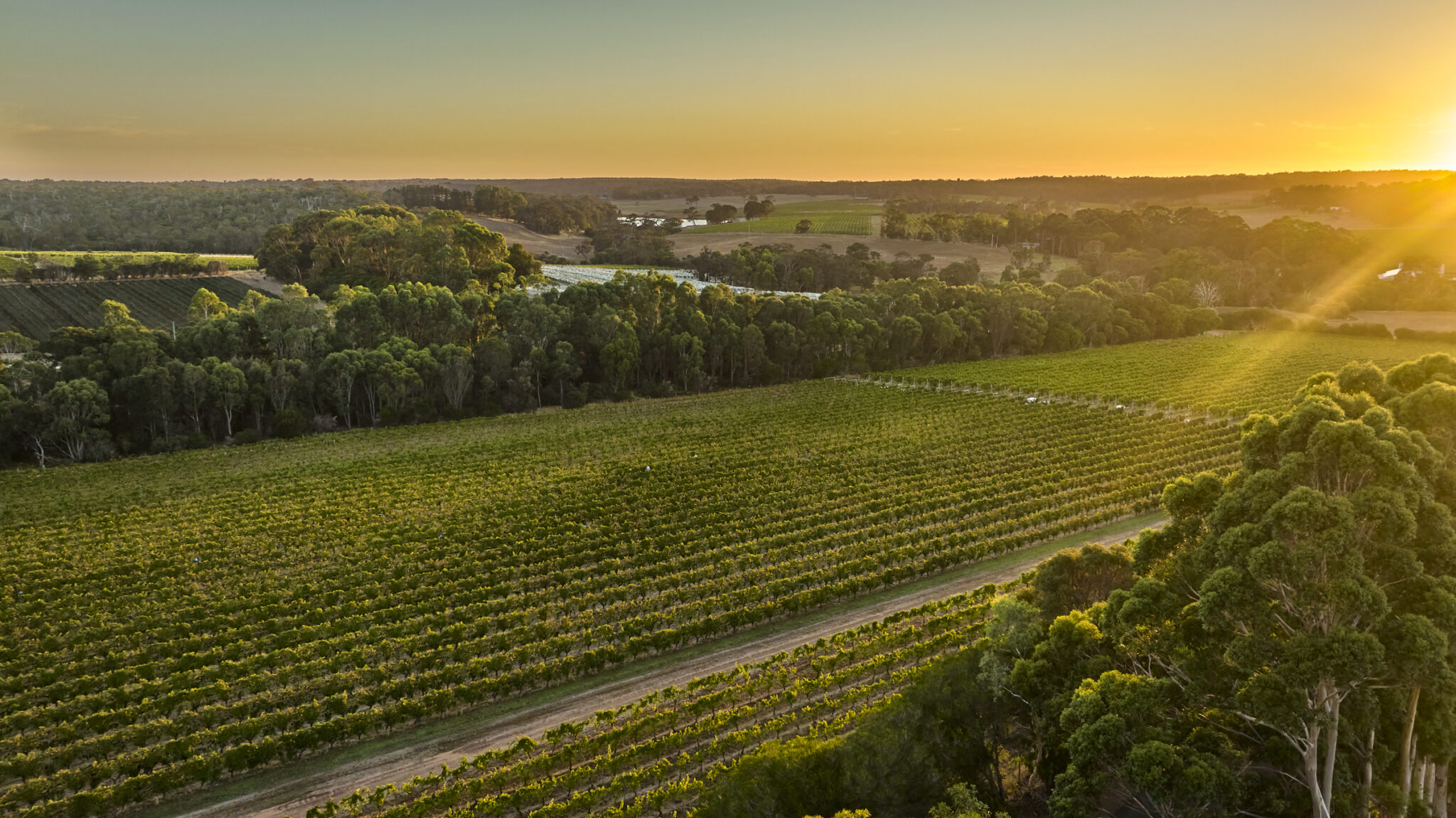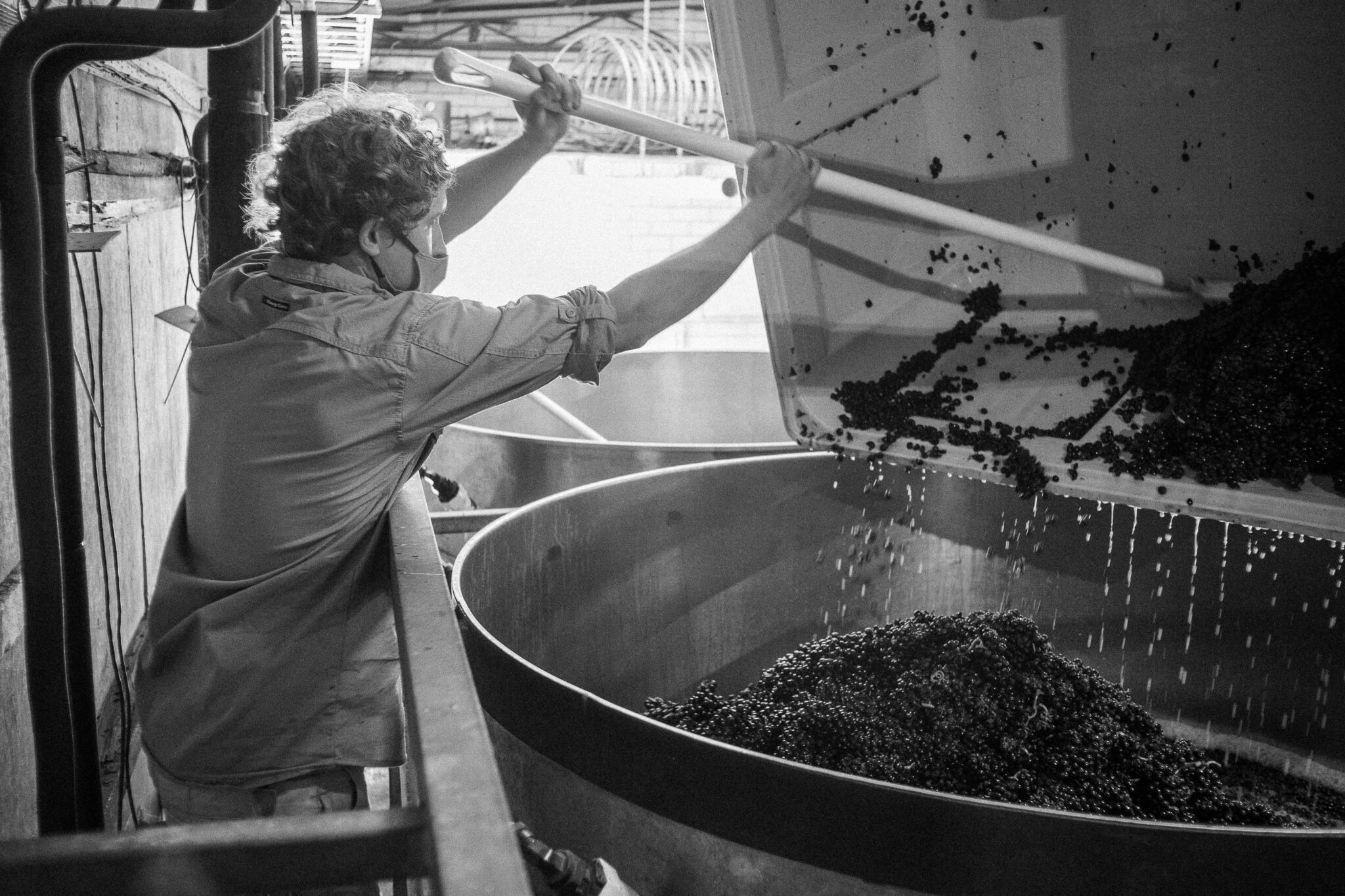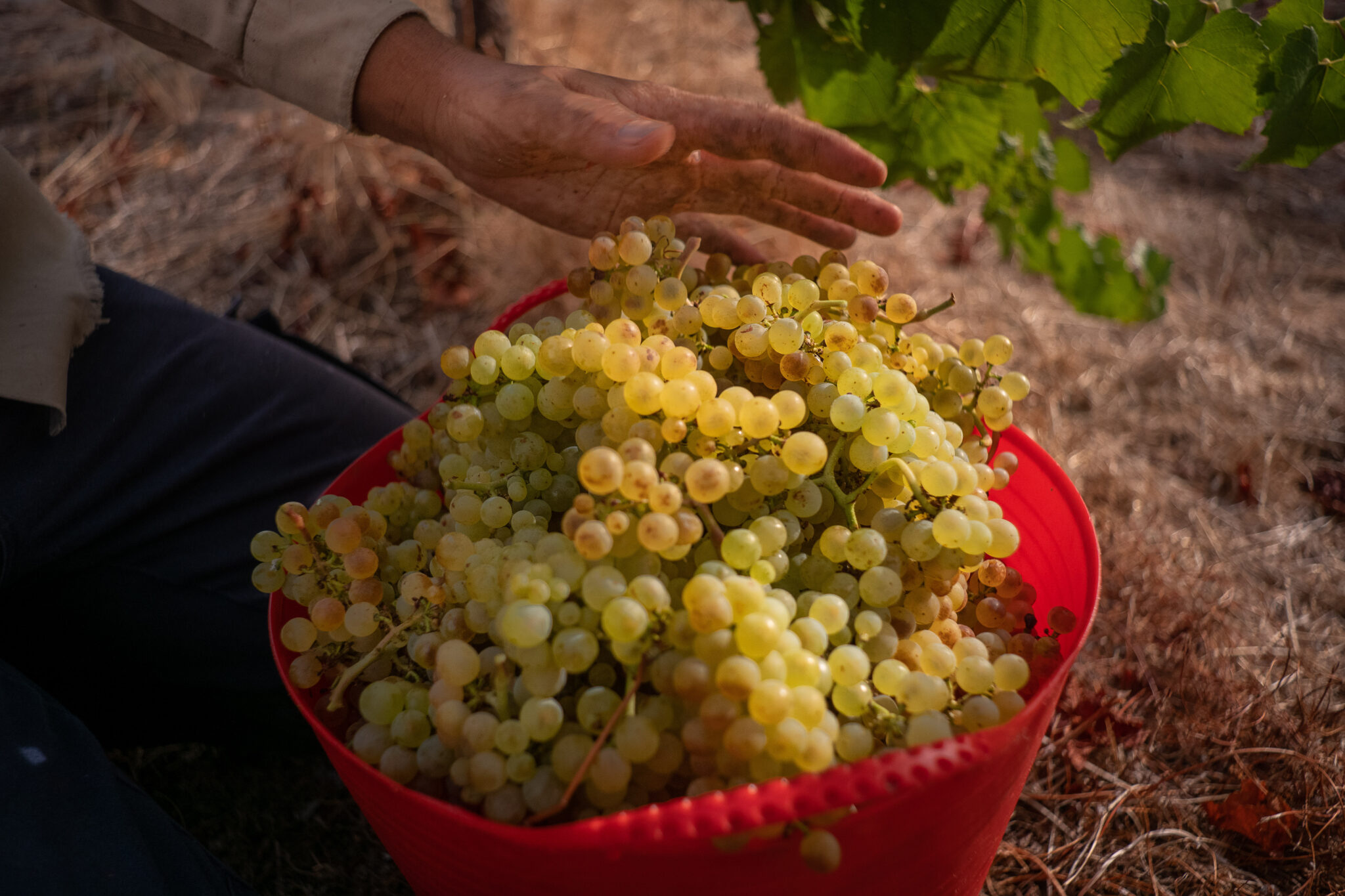Moss Wood Newsletter
Spring News Issue # 122 September 2024
Moss Wood 2023 Chardonnay
Moss Wood 2022 Pinot Noir
Moss Wood 2024 Semillon
Moss Wood 2023 Chardonnay
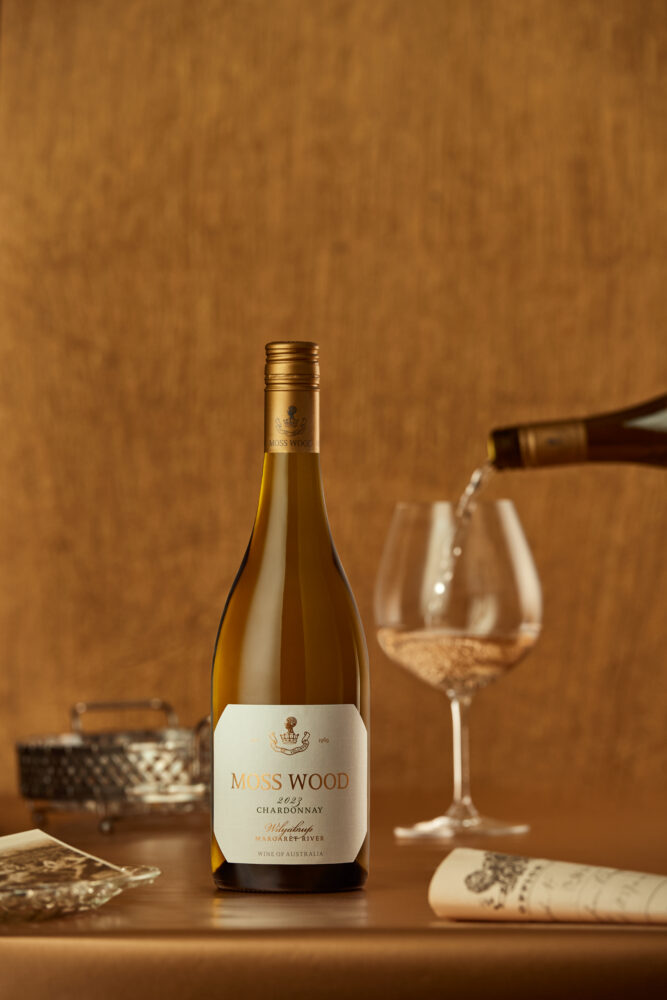
VINTAGE NOTES
Looking back on the 2022/23 growing season brings to mind memories of relatively stress-free conditions, with Mother Nature in a benign mood.
For the calendar year 2022, we recorded a solid 1114mm of rain - 9% above average - which provided the vines with ample soil moisture throughout the growing season.
Flowering began on the 22nd October and ran until 23rd November. During this critical period for bunch establishment, again conditions were favorable. We received 38.6mm of rain, with the largest single-day amount being 8.8mm. Rainfall during flowering is crucial as it influences how well the vine sets its berries. Excessive rain and cool conditions can lead to fewer and lighter bunches. Fortunately, temperatures dropped below 8°C only on 8 days, totaling 27 hours, with a coldest temperature of 4.6°C. At the conclusion of flowering, we were confident the vines were well set for a productive season.
The remainder of the 22/23 season was remarkably comfortable for both grapevines and human beings. We experienced a mild to warm summer, with an average temperature of 19.39°C - 0.54°C below the long-term average. The vines enjoyed 1048 hours within the ideal photosynthesis temperature range of 18°C to 28°C, with only 49 hours exceeding 33°C. Under these benign conditions, the fruit reached ripeness on 7th March, which was 6 days later than the long-term average, with a harvest ripeness of 12.8° Baume. Despite yields of 5.89 t/ha being 11% below average, the results were still satisfactory.
Some readers may find that a curious statement and certainly the innate farmer instincts in us would love to have seen more fruit. However, noting the oldest chardonnay vines on the property are now 48 years old, this was a pretty good result. As a vine grows old, its trunk bears the scars of all the years of pruning cuts. These impacts yield in a negative way, because it diminishes the plant’s ability to translocate nutrients for shoot and bunch growth. On the positive side, at the same time, the vine retains its old and expansive root system, meaning the plant retains full access to the nutrients in the soil, and especially to water, the most important nutrient of all in dry farmed vineyards like ours.
This highlights the dilemma we face with old vines, as Moss Wood vineyard ages. On the one hand, the productivity is gradually tailing off. Yet, on the other, the potential quality increases, because the lower crops are supported by a bigger root system, and less likely to be negatively affected by stress.
Other important positive outcomes from Mother Nature’s good mood were no disease in the vineyards and plenty of Marri blossom to distract and feed the silver eyes, keeping them out of the vines. That said, just to be on the safe and ensure no damage, we did put nets on the vineyard.
For those interested in seasonal comparisons, the average temperature of 19.39°C in the 22/23 closely matches that of 2018 (19.44°C) and 2001 (19.40°C) - two of our most celebrated vintages in Margaret River. If the wines from 2023 turn out as exceptional as those, we’ll be thrilled!
PRODUCTION NOTES
The production technique followed our established method - all fruit was hand-picked and delivered to the winery, where it was hand-sorted on our vibrating sorting table. The whole bunches were then pressed using our pneumatic membrane press, and the juice was clarified by flotation in stainless steel tank. The clear juice was seeded for primary fermentation in tank, with multiple yeast strains, and co-inoculated bacteria for malolactic fermentation. Once the ferments reached their midpoint and beyond the risk of temperature spikes, the must was transferred to 228-litre French oak barriques.
After fermentation, all barrels were racked and blended in tank, with the finished wine returned to barrels in May 2023. Of the barrels, 49% were new, and the remaining 51% were second and third use.
After 18 months, in June 2024, the wine was racked and blended in tank and fining trials were carried out. No fining agents improved the balance and, in the end, it was fined only with bentonite, for protein stability. It was cold stabilised, sterile filtered, and bottled on the 4th July, 2024.
TASTING NOTES
Colour and condition :
Bright condition. Pale golden straw with golden hue.
Nose :
Aromas of ripe white peach, nectarine, lemon cheesecake, fresh vanilla bean and fig. Very complex with subtle notes of nougat, toasted oats, cashew and shortbread in the background.
Palate:
Intense but fresh, vibrant and balanced in all aspects; ripe fruit notes of nashi pear, lime, white peach and rock melon. Subtle secondary notes of shortbread biscuit, freshly baked pastry and oak derived vanilla bean, caramel and roasted nuts. Acidity and phenolics are firm without being aggressive, and interweave with the middle and back palate seamlessly.
Cellaring:
We are confident that the Moss Wood 2023 Chardonnay will live for a long time in bottle and evolve gracefully. Over the first 5 years the wine will express its bright primary fruit flavours and the generosity of youth. After 10 years in bottle, the wine will begin to show some secondary characters which in Moss Wood Chardonnay are toast, biscuit and butterscotch. It is our expectation that after 20 years in bottle the wine will be reaching full maturity and the dominant characters on display will be the secondary notes. We are confident that the wine will maintain good balance after this and will be enjoyable to drink for at least another decade.
| Wine Facts | |
|---|---|
| Median Harvest Date | 7th March, 2023 |
| Harvest Ripeness | 12.8 Baume |
| Yield | 5.89 t/ha |
| Growing Season Ave Temperature | 19.39°C |
| Number of hours accrued between 18 and 28°C | 1048 hours |
| Number of hours above 33°C | 49 hours |
| Day Elapsed between Flowering and Harvest | 120 days |
| Bottled | 4th July, 2024 |
| Alcohol | 14.00% |
Moss Wood 2022 Pinot Noir

Vintage Notes
In 2021 we experienced an exceptionally wet year, receiving 1440mm of rain, about 40% above average. As custodians of dry-farmed vineyards, we love lots of rain but it can have downsides. Tractor operations are challenging when navigating muddy conditions, often leading to thrills and spills. However, the excellent soil moisture provides a strong start for the vines.
Flowering began on the 6th November and lasted for 27 days. The median date of 18th November was 9 days later than average, indicative of the cooler temperatures in a wet year. In an amusing and lucky twist, the rain eased and we recorded just 13.8mm, and temperatures dropped below 5°C for only 5 hours. These conditions were near-ideal for fruit set, leaving us optimistic for the season ahead.
The remainder of the growing season was characterised by warm temperatures, with an average of 20.67°C, closely matching the 2020 season (20.71°C). December brought some hot days, with maximum temperatures exceeding 35°C on the 25th through 28th. The warmest day was Boxing Day, reaching 41.2°C. Although temperatures above 35°C can stress vines and halt photosynthesis, the substantial moisture in the soil from the wet winter allowed our deep-rooted, unirrigated vines to withstand these conditions.
Ultimately, the vines experienced 846 hours of temperatures between 18-28°C and 110 hours above 33°C, providing ample ripening weather. We’re happy to add we had no disease and no bird damage, having successfully excluded the birds from the vines by using nets.
Harvest commenced with the D4 Clone coming off on 23rd February at 13.5° Baume, followed by the D5 clone on 1st March at 13.7° Baume. The average yield was 5.94 t/ha, 4% below average, reflecting the overall favourable conditions of the season.
Production Notes
The fruit was hand-picked and delivered to the winery, where 80% was de-stemmed and added to small open tanks and the remaining 20% was sorted and then added to the fermenters as whole bunches.
For those readers curious about the whole bunch addition, the explanation is as follows. This enhances quality because the presence of the bunch stems brings important components. The first is extra tannin, which adds backbone to the palate and also helps stabilise colour, something that can be lacking in Pinot Noir. The second is the lifted, spicy complexity in the aroma profile.
The must was chilled for 48 hours to enhance flavour, colour, and tannin extraction. After warming, each tank was inoculated with multiple yeast strains for primary fermentation. Extraction of colour and flavour was by hand plunging, three times daily and each batch remained on skins for two weeks. After fermentation, the wine was pressed to stainless steel for completion of both alcoholic and malolactic fermentations. The wine was then transferred to French oak barrels (18% new) for 18 months of maturation. Fining trials indicated that no fining agents improved tannin balance, so the wine remained unfined. It was sterile filtered and bottled on October 30, 2023.
Tasting Notes
Colour and condition:
Clear and bright condition, vibrant crimson red.
Nose:
Primary aromas of red fruit; strawberry, raspberry and red cherry. Floral notes of rose petal and potpourri. Background characters of cedar, mushroom and forest floor with subtle clove and charred oak on the finish.
Palate:
Bright, mouth-filling fruit notes of strawberry, cherry and plum. Pleasant spice characters of nutmeg, clove, cinnamon and dried herbs. Plenty of fruit density without being overpowering. Creamy and velvety in texture, the tannins and acid sit nicely in the background, helping give the wine power right through the middle and back palate.
Cellaring:
The 2022 Moss Wood Pinot Noir is a vibrant and approachable wine, offering lively fruit flavours and a well-balanced profile that's makes it perfect for drinking now. Yet, like many of its counterparts, it has a promising future in the cellar for those willing to be patient. With a decade of aging, it will begin to show some bottle complexity, and true maturity will unfold over the next 20 or so years and more. By then, it should retain its red and dark fruit characteristics while evolving to reveal the variety’s classic earthy notes of mushroom, meat, farmyard, and freshly turned soil. A wonderfully showing, current example of a Moss Wood aged vintage is the 1992, which has consistently been a shining example, given the cork has not tainted it. We are very relived that sealing our wines with screw cap excludes this disappointment.
| Wine Facts | |
|---|---|
| Median Harvest Date | 25th February, 2022 |
| Harvest Ripeness | 13.7 Baume |
| Yield | 5.94 t/ha |
| Growing Season Ave Temperature | 20.67°C |
| Number of hours accrued between 18 and 28°C | 846 hours |
| Number of hours above 33°C | 110 hours |
| Day Elapsed between Flowering and Harvest | 99 days |
| Bottled | 30th October, 2023 |
| Alcohol | 14.1% |
Moss Wood 2024 Semillon
Vintage Notes
The 2023/24 growing season saw old hands, Clare and Keith, carried back in time, all the way to 1994/95. The ‘95 and ‘24 vintages are nearly identical and characterised by warm, dry conditions. For the former, we don’t have temperature information because it pre-dates our weather station by 5 years. However, we can say with certainty 2024 is the warmest since 2007, with a series of warm nights in February.
At Moss Wood we love the warm, dry seasons because they deliver reliable quality, courtesy of a relatively disease-free crop and comfortable attainment of full ripeness in the grapes. While there are concerns with lower rainfall, our dry-farmed vines have some resistance to drought. For confirmation of this, look no further than the fact 1995, also a lower rainfall year, is considered one of Margaret River’s finest years and we’re confident 2024 is on the way to similar status.
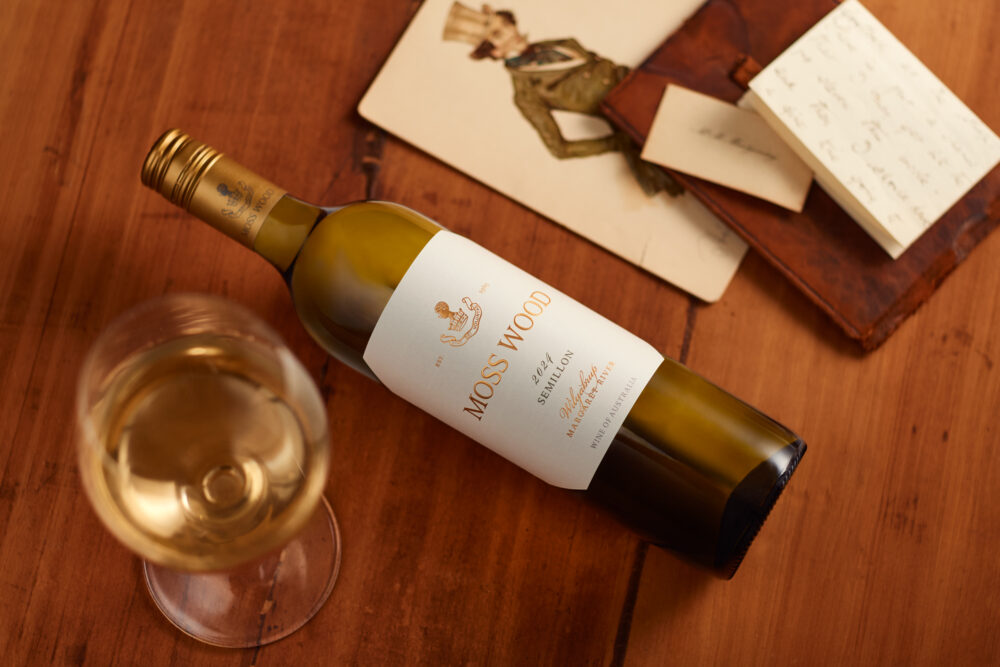
Nevertheless, the season caused some discussion amongst the wider wine community and this is understandable. For Clare and Keith, as much as they hate to admit it, the wisdom of years means they’ve seen this before but any vineyard managers and winemakers who have recently joined the industry, will not have experienced these conditions and may consider them atypical. Indeed, this will have been amplified by the impact of 2017, 2019 and 2021, each of which were very mild and quite different to 2024.
Returning to the discussion of 23/24, it started in a boringly normal fashion with Semillon commencing flowering 6 days earlier than average on the 30th October and lasting for a very prompt 18 days. No rainfall was recorded during the period and the temperature never dropped below 6.6°C. Conditions were ideal and allowed the Semillon to set it’s fruit in near-perfect weather.
The calendar year 2023 brought 880mm of rain which was 13% below average. This alone wouldn’t necessarily be an issue for the vines; however, the timing of the rain is important. Just 10mm was recorded from when the vines began flowering at the end of October until harvest on the 13th February. This lack of rainfall is apparent with the yield of just 4.97t/ha, some 63% below average.
The fruit was in fantastic condition and the flavours were excellent when we harvested it on 13th February, 3 weeks earlier than average. The vines had enjoyed 942 hours in optimal ripening range of 18-28°C, as well as 89 hours above 33°C.
Production Notes
The hand-picked fruit was delivered to the winery where it was hand-sorted and whole-bunch pressed. It was then clarified in stainless steel tank by flotation after which the clear juice was racked to stainless steel and inoculated with multiple yeast strains for primary fermentation. This was controlled to a maximum of 18°C and lasted for 11 days before all of the sugar was depleted. Once the wine reached dryness, it was racked off fermentation lees and prepared for bottling. We undertook fining trials and determined that none improved the balance and the wine remained unfined, apart from with bentonite for protein stability. After cold stabilisation and sterile filtration, the wine was bottled on 1st July, 2024.
Tasting Notes
Colour and condition:
Bright condition, medium straw with green tints.
Nose:
Lifted primary aromas of lemon rind, sherbert, fig and quince. This is followed by hints of more complex aromas of honey, lanolin and gingerbread biscuits.
Palate:
The palate has a zippy acidity that integrates with fresh primary characters of lemon, fig and green apple. The mouth-filling primary characters are combined with fine tannins to give a long finish. There is a pleasant lanolin-like oily texture in the mid-palate which gives the wine generosity and a smooth finish.
Cellaring:
The 2024 Moss Wood Semillon is a beautiful young wine that's ready to be enjoyed now, and we’re pleased to recommend it to those who appreciate vibrant, youthful wines. For those willing to wait, however, this Semillon has the potential to age gracefully for decades. We suggest cellaring it for at least 10 years to develop its bottle bouquet. Even after this time, it will still be maturing and may need another decade to fully reveal its exceptional quality. These Moss Wood Semillon wines have proven themselves to live to 30 years plus, as great toasted and honeyed wines, even with a cork sealing them, which is what they had prior to 2005, if not cork tainted.
| Wine Facts | |
|---|---|
| Median Harvest Date | 13th February, 2024 |
| Harvest Ripeness | 13.9 Baume |
| Yield | 4.97 t/ha |
| Growing Season Ave Temperature | 20.84°C |
| Number of hours accrued between 18 and 28⁰C | 942 hours |
| Number of hours above 33⁰C | 89 hours |
| Days Elapsed between Flowering and Harvest | 97 days |
| Bottled | 1st July 2024 |
| Alcohol | 14.0% |
Order
OUR WINES:
Contact
MOSS WOOD:
Location: 926 Metricup Road, Wilyabrup WA
Postal: PO Box 225, Cowaramup WA 6284
Phone: +61 8 9755 6266
Fax: +61 8 9755 6303
Follow us on
SOCIAL MEDIA:

